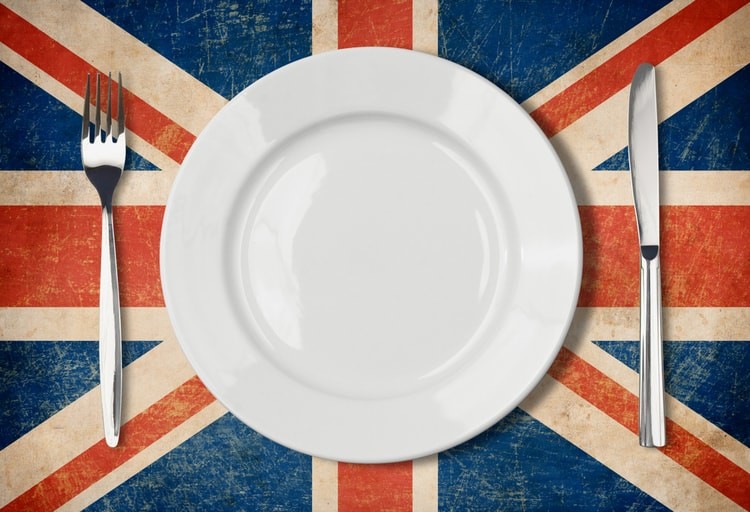Tradicional English foods, at its best… All the stuff You have to try before You will Die.
United Kingdom is a true melting pot , not only between England, Scotland, Whales and Ireland, but also it includes all of the different ethnicities living there, and of course their food preferences. Nevertheless the English cuisine is very specific and recognizable, jet many of us have not a great idea what the English food is really like…
Today I am taking you to a culinary trip to London and the neighborhoods, to check all the mazing, and scrumptious dishes. let us begin..

Battenberg
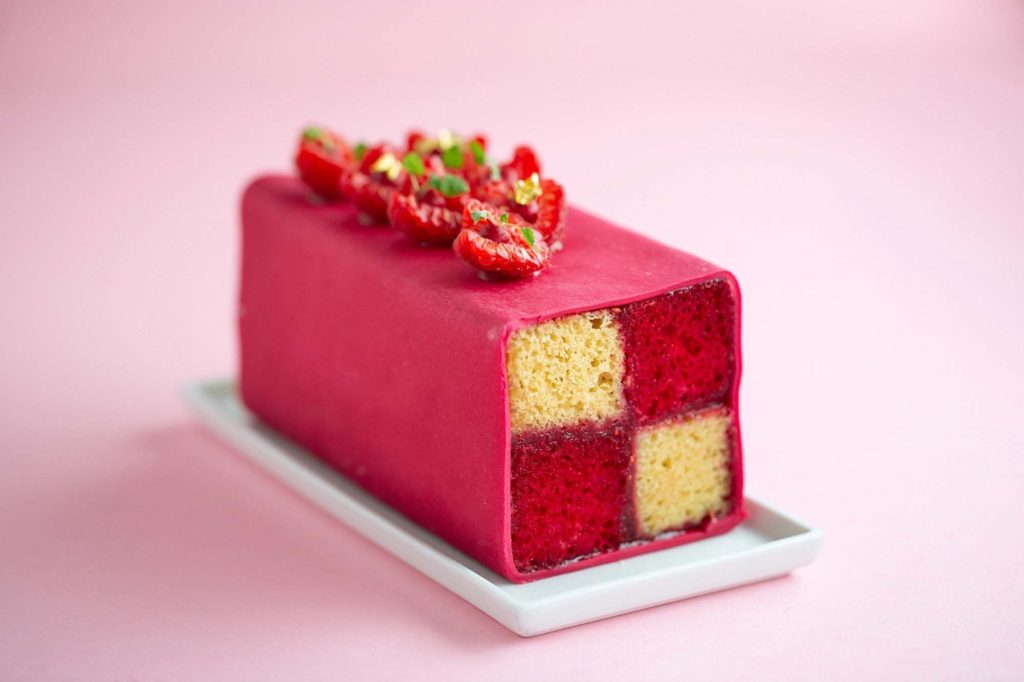
is a light dessert consisting of alternating, colored squares of genoise sponge coated with an exterior of apricot jam and almond paste. It is believed that the cake was invented in order to celebrate the 1884 wedding of Prince Louis of Battenburg to Princess Victoria. The four sections of genoise sponge are supposed to represent the four Battenburg princes – Louis and his brothers.
Cucumber sandwich

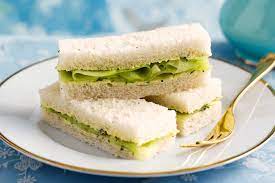
This simple, elegant staple of the famous British afternoon tea, known as cucumber sandwich, is a concoction made with crustless triangles of lightly buttered white bread that is filled with paper-thin cucumber slices, a little bit of salt, and a dash of lemon juice. The Brits invented it during the Victorian period, when it was mainly popular among members of the upper class. Today, there are many variations on the original, with added tuna, eggs, cream cheese, and mayonnaise.
Worcestershire sauce

is a pungent, savory sauce made from anchovies that have been fermented in vinegar, with the addition of flavorings such as garlic, chili, salt, sugar, and onions. The sauce was invented in Worcester by John Wheeley Lea and William Perrins, two chemists who were once visited by Lord Sandys, Governor of Bengal.
Spotted dick
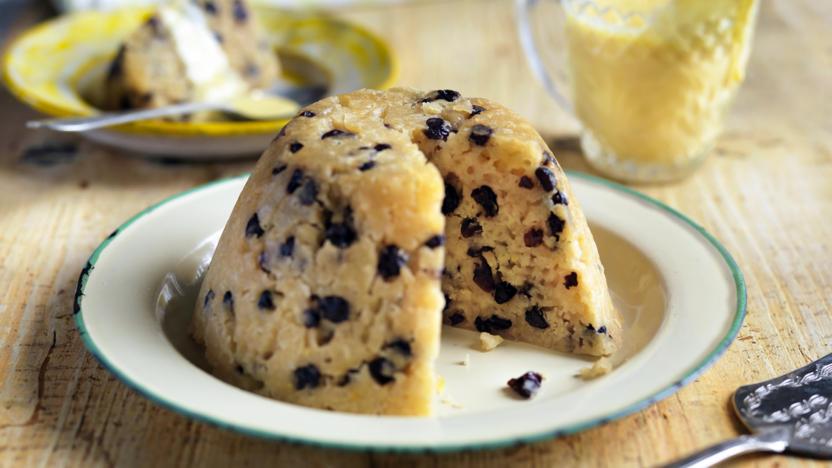
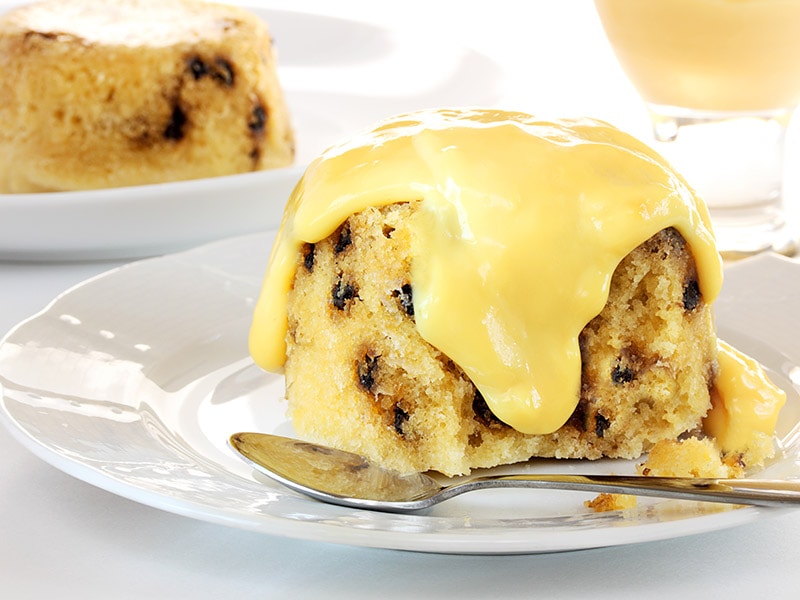
is a traditional British sponge pudding made from a suet (mutton fat) pastry which is then sprinkled with a variety of dried fruits such as raisins or currants. Its flavor is slightly sweet since it is only flavored with a small amount of lemon juice. Instead of sugar, the sweetness comes from the custard sauce, which is always served with spotted dick. The unusual name of the dessert comes from two words, spotted, referring to the raisins and currants that are seen throughout the pudding, and dick is believed to come from the shortened Old English names for pudding such as puddog or puddick.
Christmas pudding
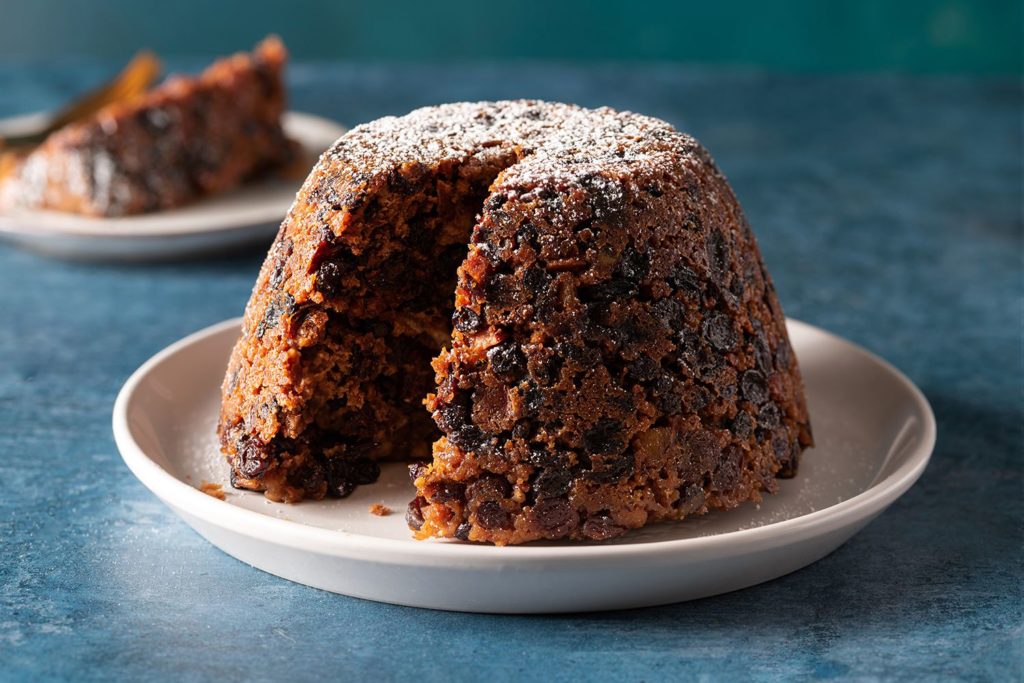
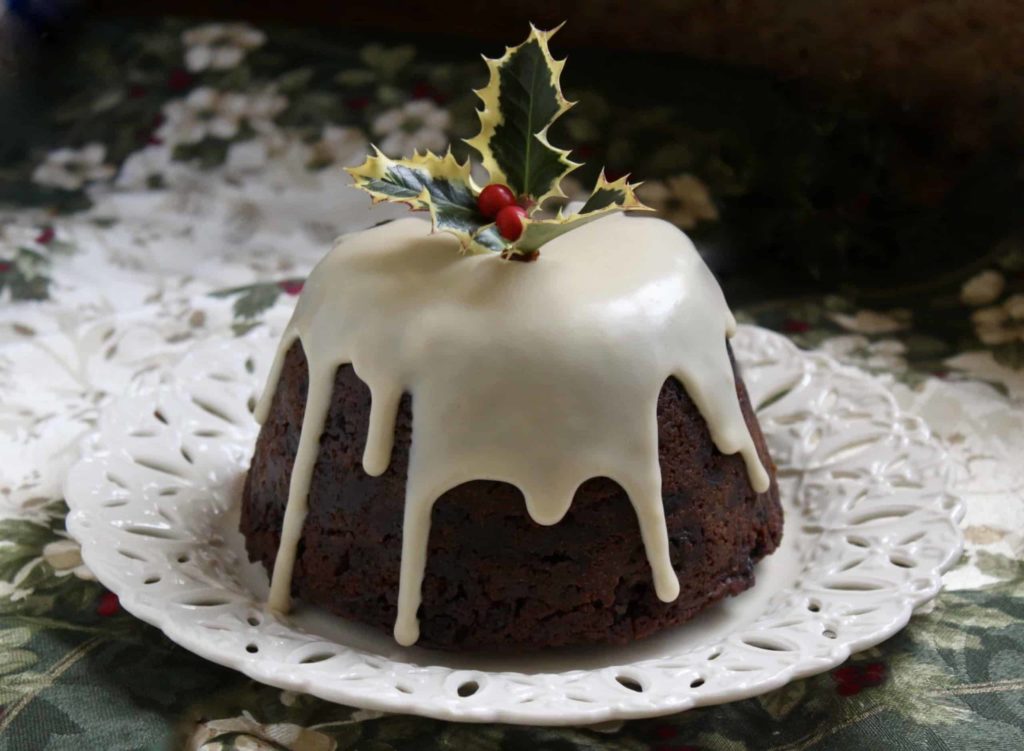

Sometimes called a Plum pudding is a staple dessert at every British Christmas dinner ever since its introduction by Prince Albert. Early versions contained meat such as beef or mutton, along with wine, onions, dried fruits, and warming spices. Today, Christmas pudding does not contain meat, but fruits, eggs, suet, molasses, and spices instead of it, and every family has their own recipe for this steamed treat.
Sausage rolls
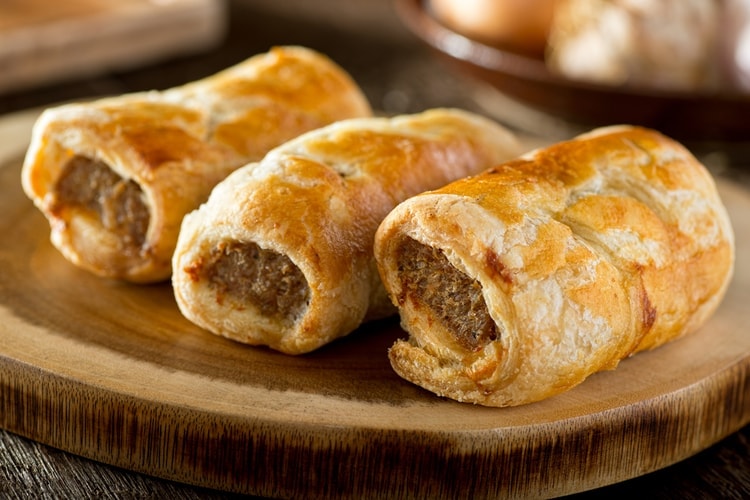
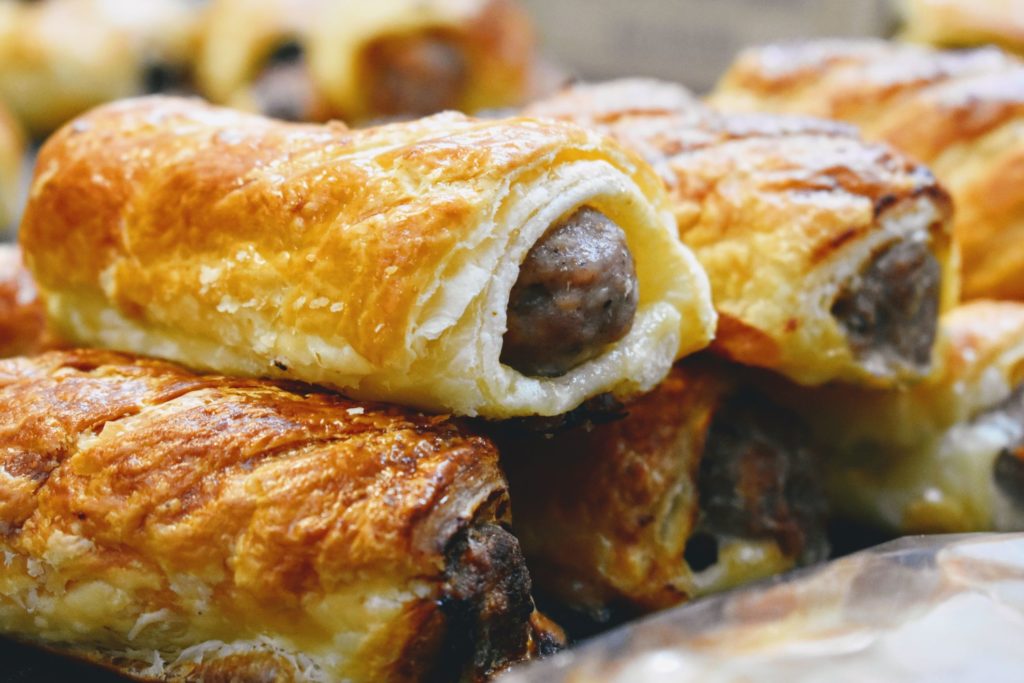
They are traditional British snacks consisting of British sausage meat that’s wrapped in puff pastry and baked. Before they’re baked, the sausage rolls are often brushed with eggs or milk. Once done, they can be served hot or cold. In the past, they were made from shortcrust pastry, but nowadays, the puff pastry versions are sold at numerous bakeries and supermarkets across the country. Sausage rolls can be served as appetizers or snacks, usually when made at home. It’s recommended to serve them as they are or with a few tasty dips on the side.
Crumpet
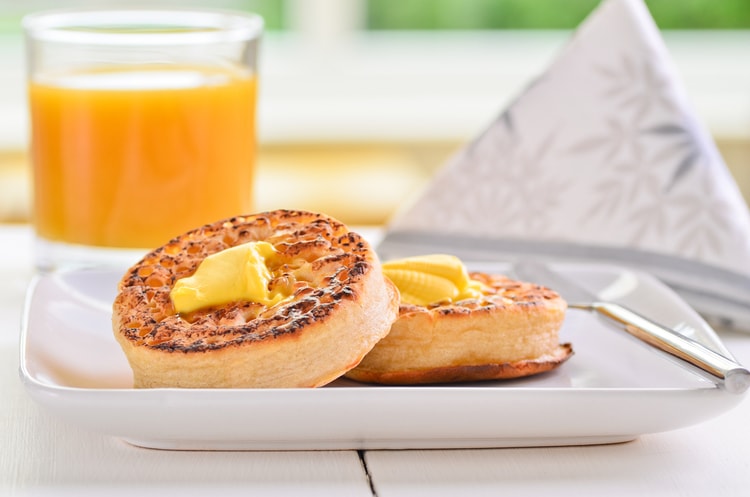
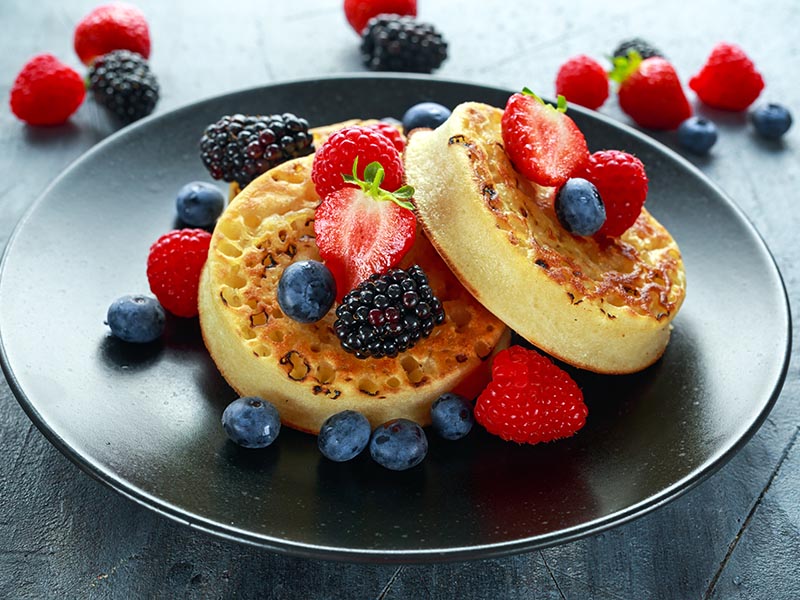
A quintessential British teatime treat, crumpet is a small round bread or cake that is traditionally cooked in a special crumpet ring on a griddle. It is typically prepared with flour, milk or water, and yeast, though sugar, salt, and baking powder or baking soda are also often added to the combination. Initially, the cakes resembled pancakes due to their thin and flat shape. Today’s crumpets have a soft, spongy, and slightly chewy texture that comes from the addition of yeast and baking powder to the cake’s batter, an ingenious twist on the cake that’s been attributed to Victorian-era bakers. Crumpets are recognized for their smooth round bottoms that are in stark contrast to their unique surfaces which are dotted with dozens of tiny holes. This traditional specialty is usually enjoyed for breakfast or as an afternoon tea treat, typically slathered with butter, jam, honey, or golden syrup.
Jellied Eels


this London-born dish is among the most historic to survive in the city today—and it actually tastes good. Jellied eels is a traditional Cockney Street food item, dating back to the 18th century. Originally, it was a cheap and easy way to make a good dish, with plenty of native eels readily available in the Thames River. The eels would get chopped, boiled for approximately half an hour in herbs, then cooled – that is when the fish would produce their own gelatin, and a soft, transparent jelly would form on the cut pieces.
The texture of jellied eels is delicate and soft, and while some may say it’s unpleasant, their flavor is unique – mild, slightly salty, like pickled herring, but without the unusual “fishy” scent. They are commonly accompanied by white pepper and vinegar in order to further accentuate the flavors.
Steak and kidney pudding
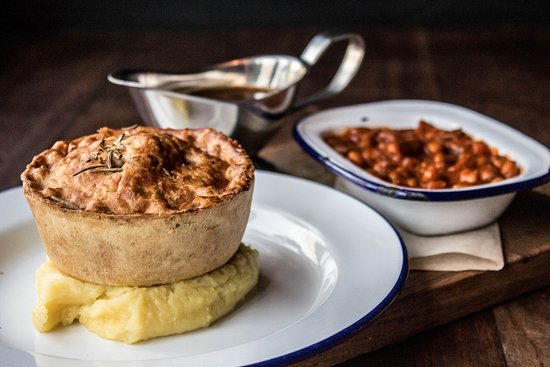
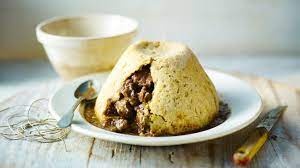
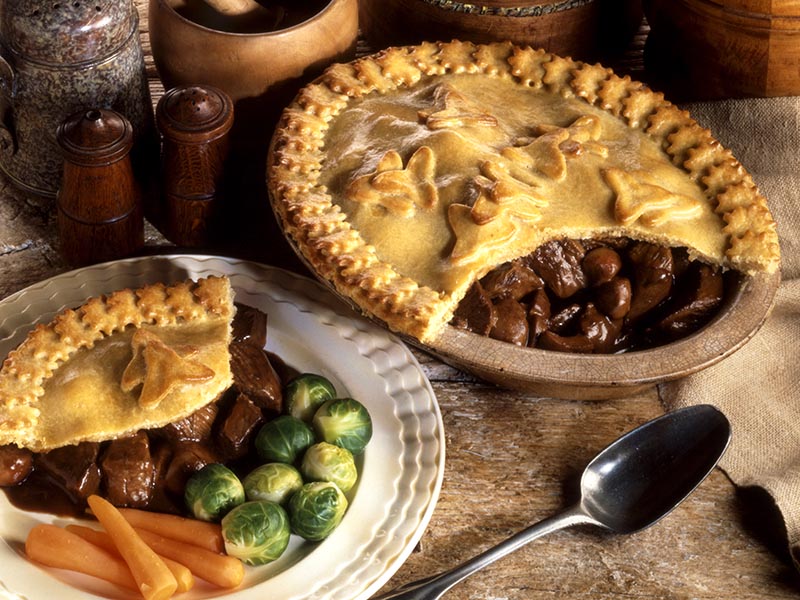
This classic English dish consists of a suet pastry filled with diced beef, gravy, and chunks of lamb or pig kidneys. The pudding is traditionally steamed for a long time before serving. It can be accompanied by mashed potatoes and a variety of vegetables on the side.
Melton Mowbray pork pie
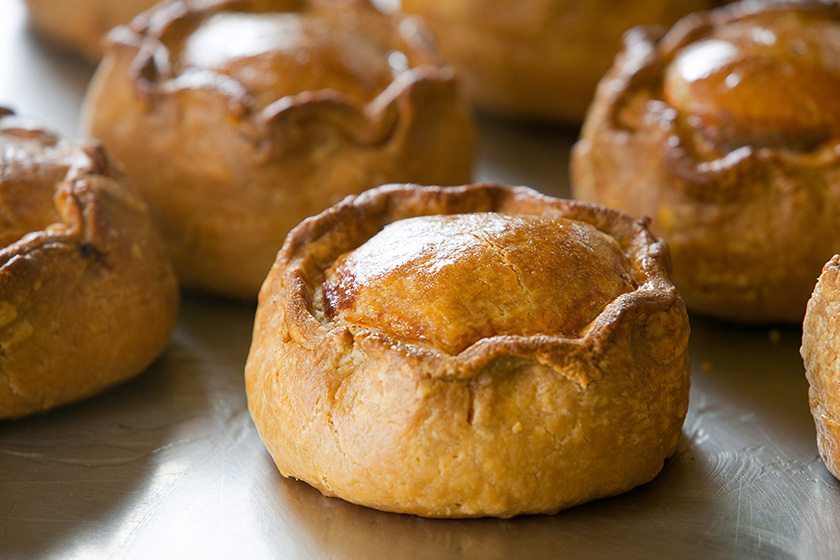
is filled with the finest fresh pork meat which is chopped and seasoned with salt and pepper. When baked, the meat filling turns grey in color, just like roast pork, and it is particularly succulent. Melton Mowbray pies are traditionally baked free-standing, without a hoop, which gives the golden-brown pastry case its typical shape.
Steak pie

is a traditional British dish consisting of a pastry shell filled with stewed steak, gravy, and various vegetables, depending on personal preferences. The early versions, first recorded in the 18th century, consisted of a beefsteak pudding combined with suet. Today, the dish is popular throughout the United Kingdom, and it is traditionally served on New Year’s Eve in Scotland. It is recommended to pair the pie with chips, salt, and vinegar.
Cornish pasty
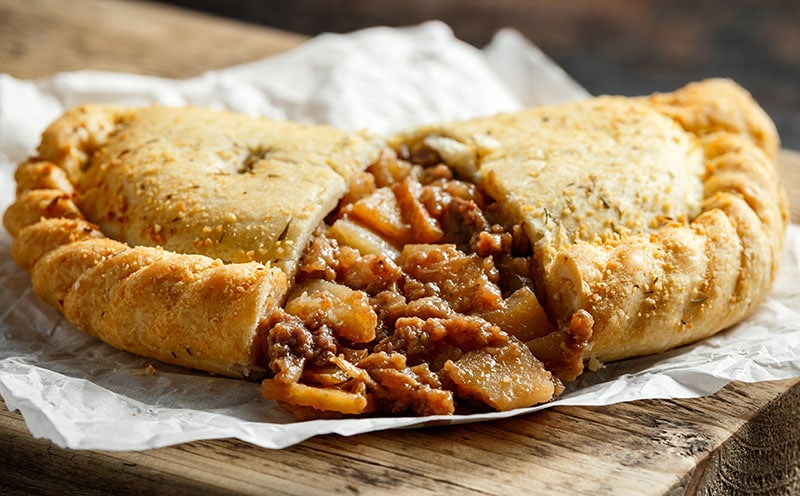
is a popular dish that is a specialty of Cornwall. Shaped into a form of the letter D or a half-moon, this crispy and juicy pastry is filled with beef and various root vegetables and seasonings. The golden color of the pastry is achieved by using egg wash or milk glazing, while the interior is filled with potatoes, turnips, onions, diced beef, herbs, and seasonings. The final product has a balanced, savory taste, due to the fact that only high-quality beef and vegetables from the Cornwall area are used in it. It is believed that Cornish pasty was invented as a practical, portable meal for tin miners who couldn’t leave the mines for lunch, and its thick crust kept the fillings warm for a long time.
Fish and chips
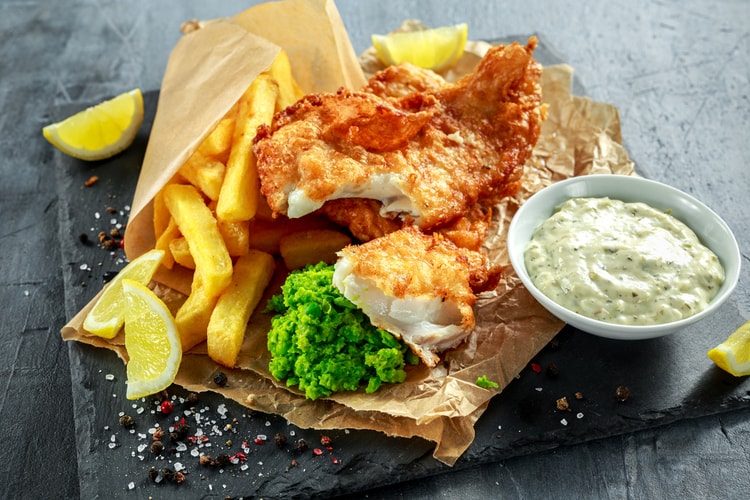
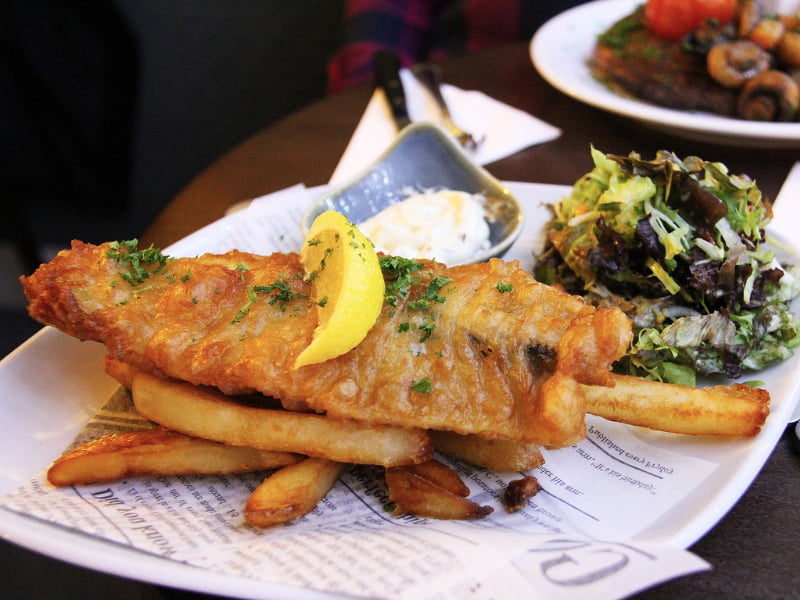
This comforting widely loved national dish consists of a freshly fried, hot, white fish fillet and large, sliced, and fried potatoes. Cod, haddock, and flounder are the most common types of fish that is fried for the dish, and the customers can choose which type of fish they want, with cod being the most popular choice. The fillets get dipped in a batter made from eggs, milk, and flour, and are then fried in oil, lard, or beef drippings along with the potatoes. The origins of this dish go back to the 17th century, when potatoes were fried as a substitute for fish in the winter months, while fried fish was introduced into the country by Jewish refugees. Fish and chips are a favorite takeaway dish, with numerous chippies (fish and chips shops) popping up all over the country and offering a few accompaniments and sides, such as salt, vinegar, mushy peas, curry sauce, ketchup, brown sauce, and a cup of sweet, milky tea.
Beef Wellington
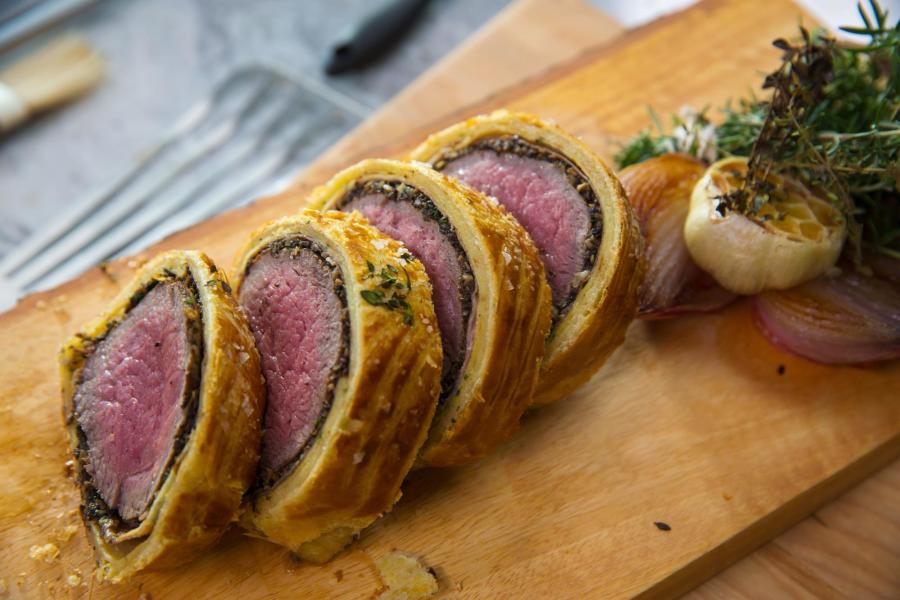
It is a dish consisting of a whole filet of beef that is coated with a pâté and duxelles, a combination of minced mushrooms, herbs, and shallots. The concoction is then wrapped in puff pastry and baked in the oven. Traditionally, slices of beef Wellington are accompanied by madeira sauce. It is believed that the dish was named after Arthur Wellesley, the first Duke of Wellington, who defeated Napoleon at Waterloo. However, the dish was not known in Wellesley’s lifetime, so the origins of beef Wellington still remain murky, and some believe that the dish got its name because it resembles a Wellington boot.
Sunday roast
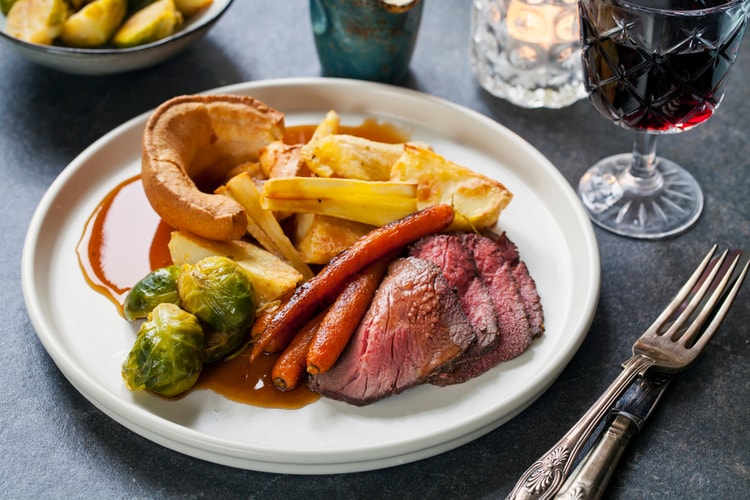

is traditionally made for the big family meal of the week, Sunday lunch. Depending on the area, some carve the meat in thin slices in the kitchen and bring it to the table, while others carve it on the family table so that everyone can enjoy the view. Although beef is the most traditional option, lamb, duck, goose, pork, or turkey are also often used for Sunday roast. The meat is almost always accompanied by roasted potatoes, fresh seasonal vegetables such as broccoli, cabbage, and parsley, carrots with coriander, and a thick, rich gravy.
Yorkshire pudding

is a popular English side dish that is traditionally served during Sunday roasts. It is made from a creamy batter consisting of flour, eggs, and milk or water. While some might think of it as a dessert, in Britain, the pudding was typically a meat-based dish, whereas today puddings exist in a number of different variations. Yorkshire pudding is served either before the main meal as an appetizer or alongside it as a side dish. In the past, it was consumed with a rich, thick gravy in order to satiate the people with low-cost ingredients, so they wouldn’t need to eat too much of the expensive meat that was served as the main dish.
Apple pie


The most famous and perhaps the tastiest English dessert is apple pie, i.e., baked apple tart. The cake is served very often with whipped cream, ice cream, traditional English custard or… pieces of cheddar cheese.
Apple pie consists of 3 parts – the bottom layer of the cake, a thick layer of apples and the second part of the cake that covers the filling. Traditionally, the upper part takes the form of thin, crossed stripes. The first recipes for this traditional apple pie date back to the 14th century. The recipe, dating from 1381, includes: good apples, good spices, figs, raisins, and pears. Saffron was often used to color the filling. The cake tastes great both cold and warm.
Scotch eggs


are one of Britain’s most popular snacks, consisting of hard-boiled eggs that are encased in sausage meat and coated in breadcrumbs. However, if desired, the eggs can be slightly runny. The combination of these ingredients is then deep-fried in hot oil until golden and crispy. It is the English picnic ultimate favor. Despite its name, it’s unlikely that the Scotch egg originated in Scotland at all. It is believed to be an adaptation of the Indian dish ‘nargisi kofta’ – a minced meat-covered egg served with curry – that was introduced to England by returning soldiers. The London department store Fortnum and Mason claims to have created the first ‘proper’ Scotch egg in 1738. They say that the dish was originally made to fortify wealthy travelers on their long carriage rides.
Full English Breakfast
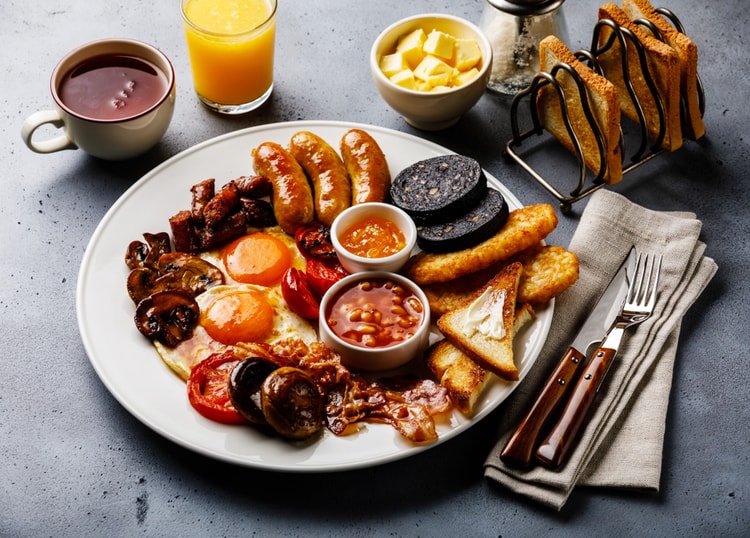
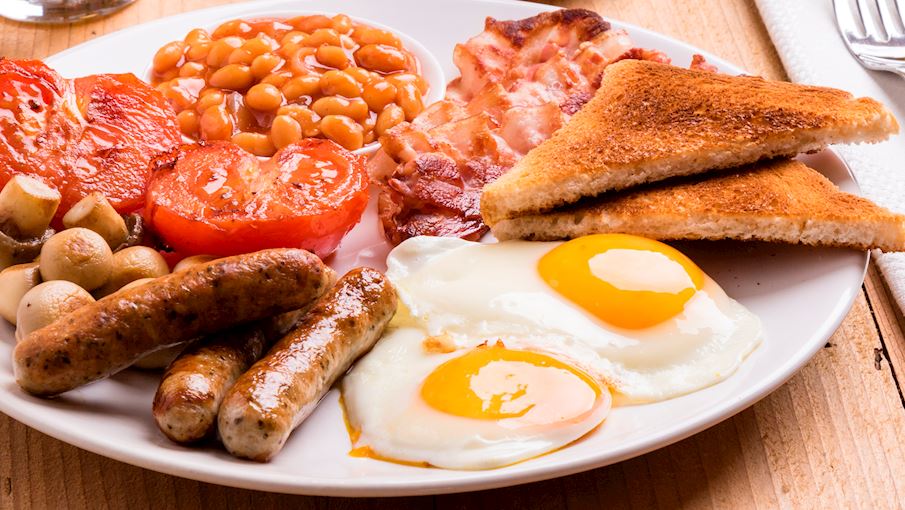
Breakfast in England is always large and high in calories. When we go to the restaurant in the morning, we can find a real caloric bomb in the breakfast menu. Most often it is a combination of: fried eggs, fried sausages, bacon, baked beans, and fried mushrooms. Plus, of course, toast and hash browns.
Pound cake
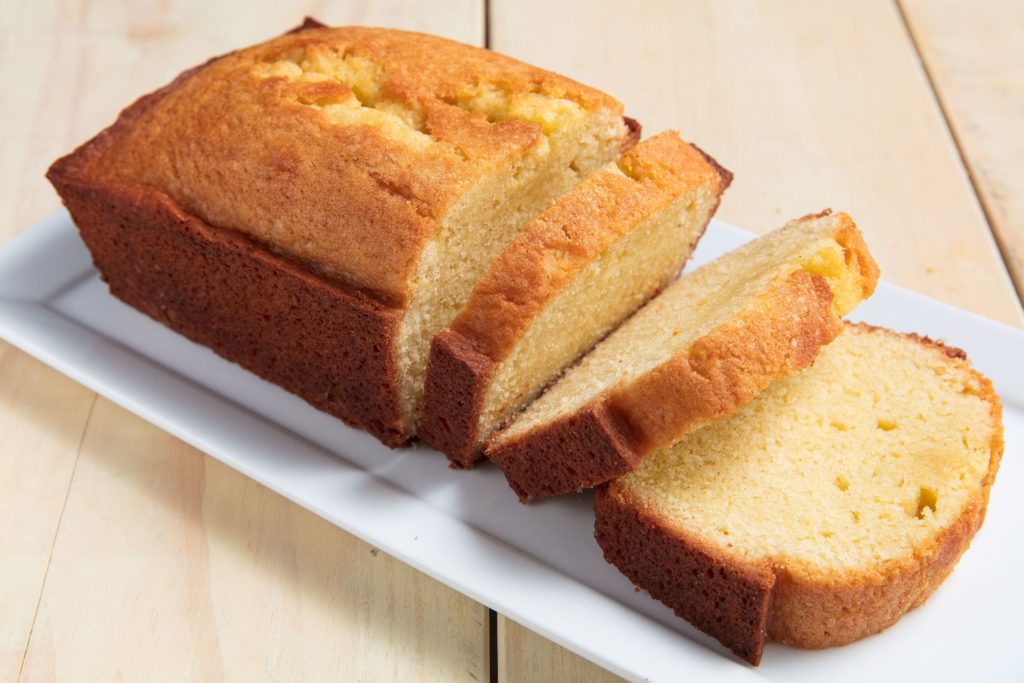
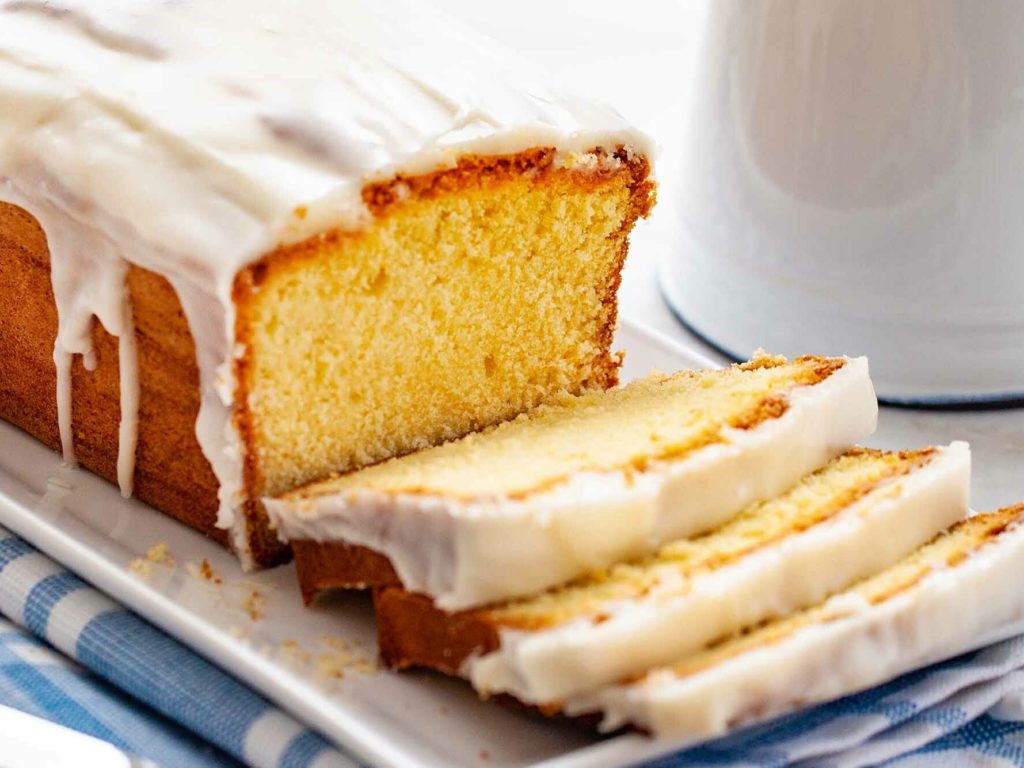
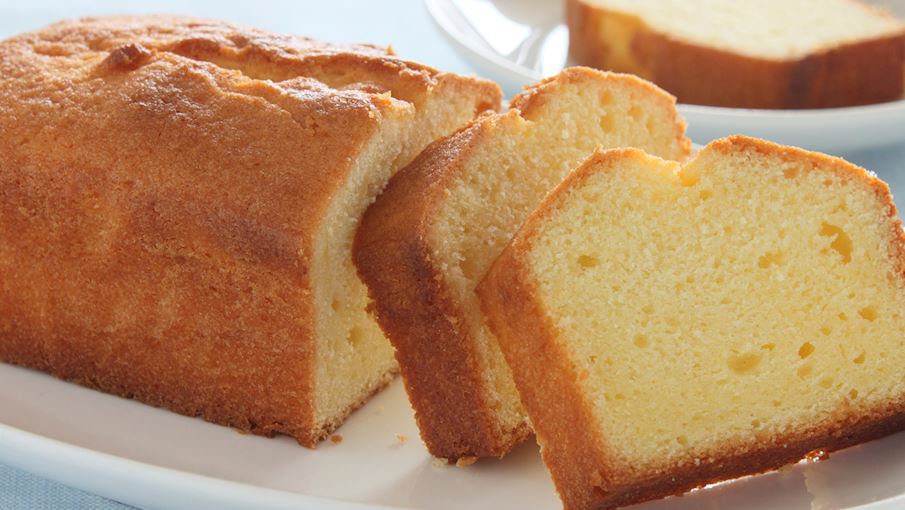
It is a British dessert consisting of one pound of each of the following ingredients: flour, butter, sugar, and eggs, hence the name. There is no leavening agent used in the preparation, except the air that is whipped into the batter. It dates back to the early 1700s, and because many people didn’t know how to read, the simple convention made it quite easy to remember the recipe. By the 1800s, the recipes began to deviate from the original, and the ingredients were used in smaller quantities, resulting in a lighter, smaller cake, whereas the original was very big and could feed a large number of people
Jacket potato


When you hear about potato in the name and there is no surprise here. The key element of this dish is a large jacket potato. Then it is baked, cut, and filled with numerous toppings. Such as: beans, vegetables, and fish paste. In addition, you should sprinkle the whole with cheddar cheese. All these ingredients give us an easy and nutritious meal.
Lancashire hotpot
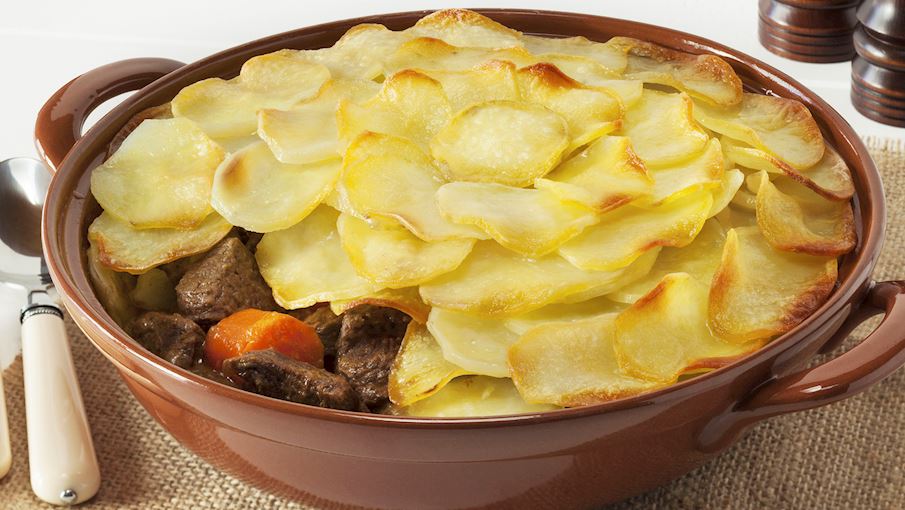
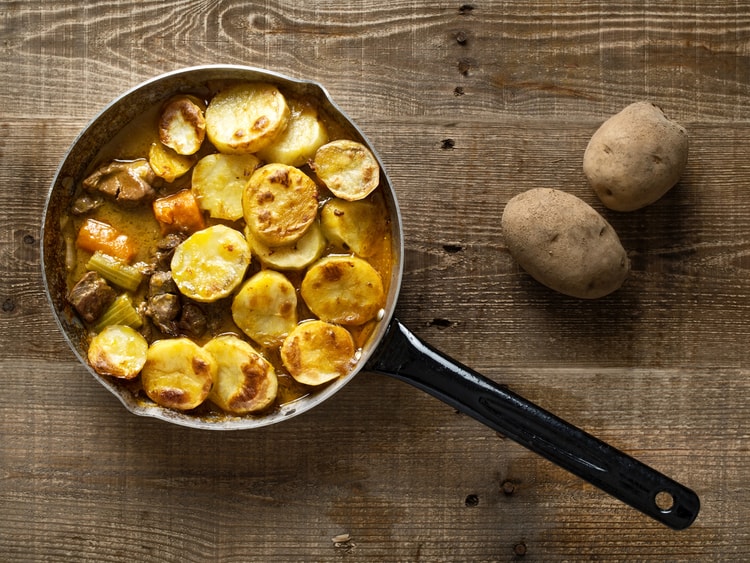

the so-called Lancashire cauldron. It is by far one of the most traditional English dishes. Poles call it a one-pot dish, in German it is referred to as Eintopf. What is the basis of the cauldron? Lamb, which could previously be replaced with … mutton necks. In addition, the dish is enriched with onions, carrots, turnips and, of course, potatoes. Finally, cook the whole thing for a long time.
Shepperd’s pie

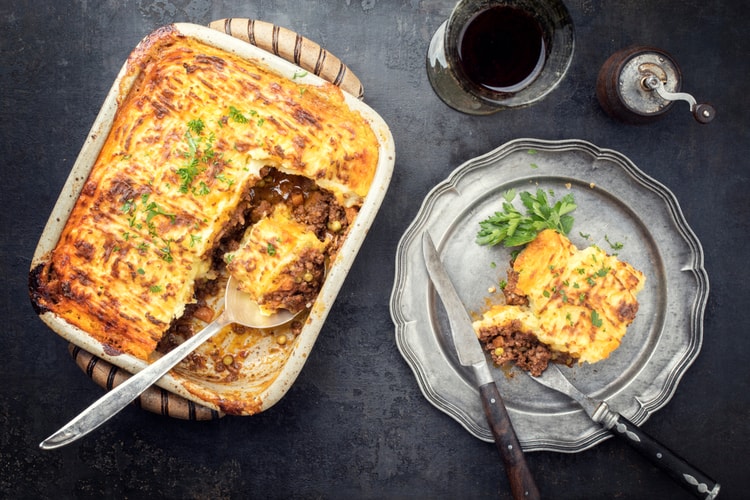
One of the most popular comfort foods in the United Kingdom is called shepherd’s pie, a hot and savory dish reminiscent of a casserole, consisting of minced lamb or mutton meat, onions, carrots, Worcestershire sauce, thick gravy, and seasonings such as marjoram, parsley, and black pepper. All of the ingredients are placed under a roof of buttery, creamy mashed potatoes, and baked in an oven until the pie is ready for consumption. This simple delicacy was invented by shepherds in the 18th century England and Scotland.
Black pudding
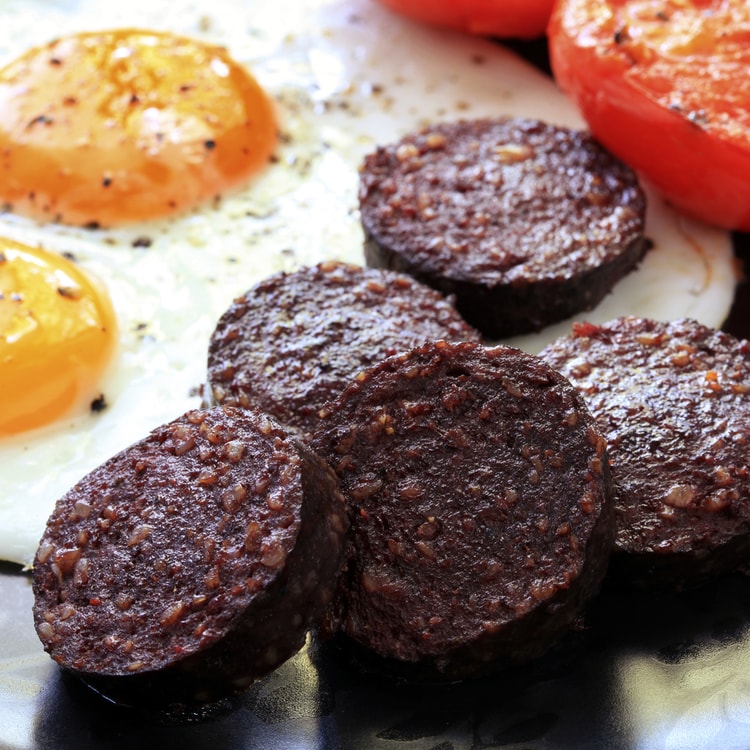
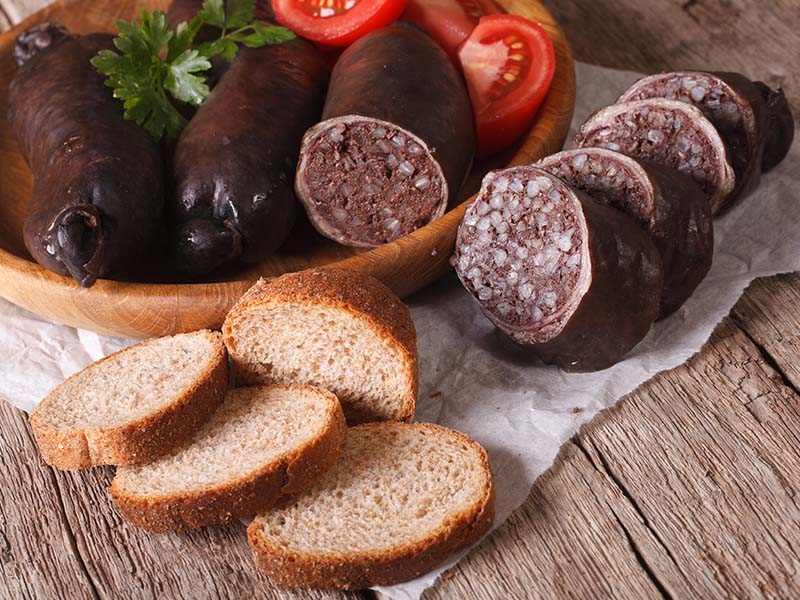
is a famous British delicacy made from animal blood (usually from pigs), oatmeal, and fat. The combined ingredients are stuffed into a casing, and the sausage can then be fried, grilled, boiled, sliced, or crumbled. In Manchester, it is traditionally boiled and served with vinegar, while in other parts of the country, it is often a part of the traditional full English breakfast ( check the ultimate breakfast list )
Sticky toffee pudding
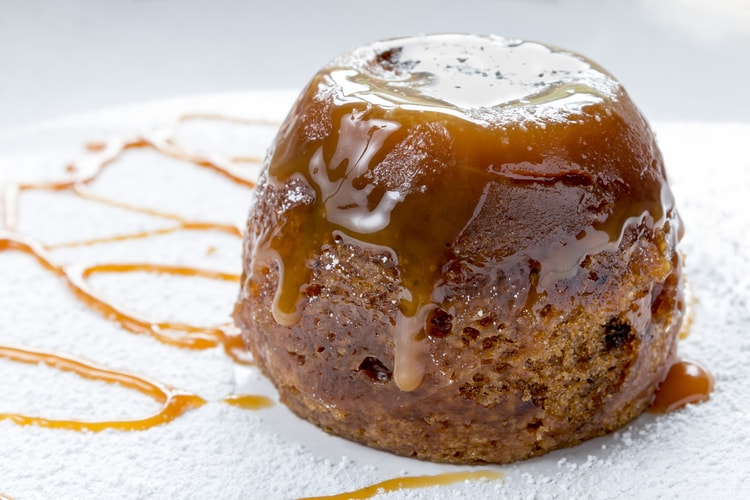
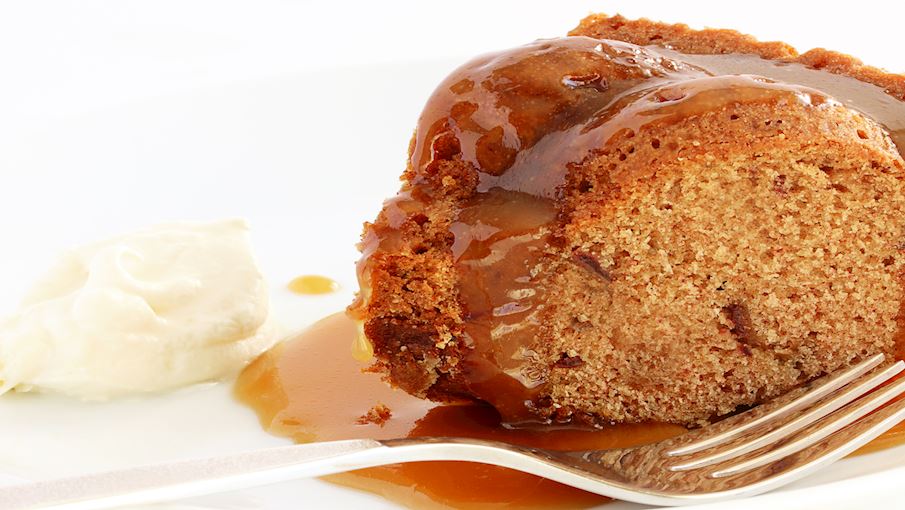
is a rich, moist sponge cake filled with dates, covered in a sticky toffee sauce. The dessert is traditionally served with custard or a scoop of vanilla ice cream on the side. Its origins are quite murky as some claim it originates from the Sharrow Bay Hotel in the Lake District, while others say that it was invented at the Udny Arms Hotel in Aberdeenshire.
Treacle tart

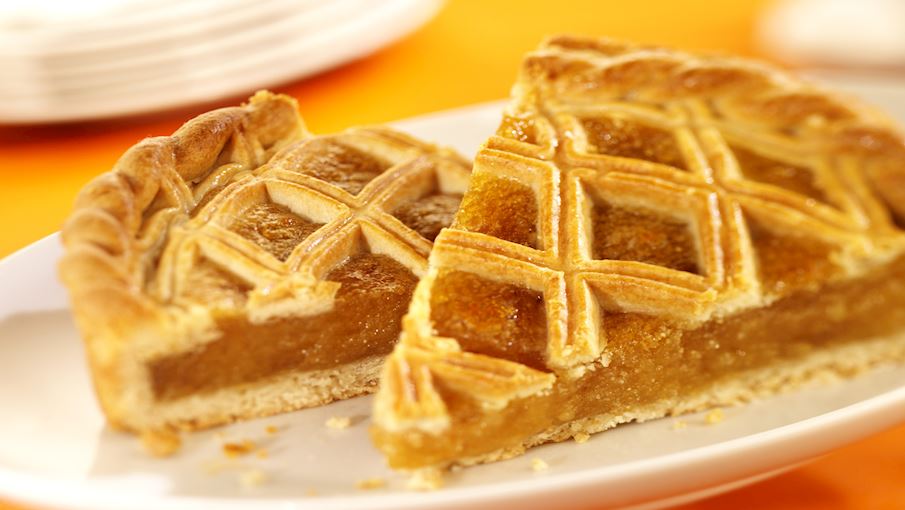

This traditional British dessert consisting of a shortcrust pastry filled with sugar syrup, breadcrumbs, lemon juice, and spices such as ginger, cinnamon, and cloves. Originally, treacle was the most inexpensive sweetener, so food historians believe that the dish was invented as a way for peasants to use up leftover bread. This classic dish is traditionally served warm, with a dollop of clotted cream, whipped cream, or a few scoops of ice cream on the side. Local variations include Yorkshire’s treacle tart with added dried fruit and grated apple, and Suffolk’s, which has eggs beaten into it for a custard-like result.
Toad in the Hole


The unusually named toad in the hole is a traditional British delicacy consisting of a number of sausages baked in a Yorkshire pudding batter. The dish is traditionally served with vegetables, mashed potatoes, and onion gravy on the side
Bangers and Mash


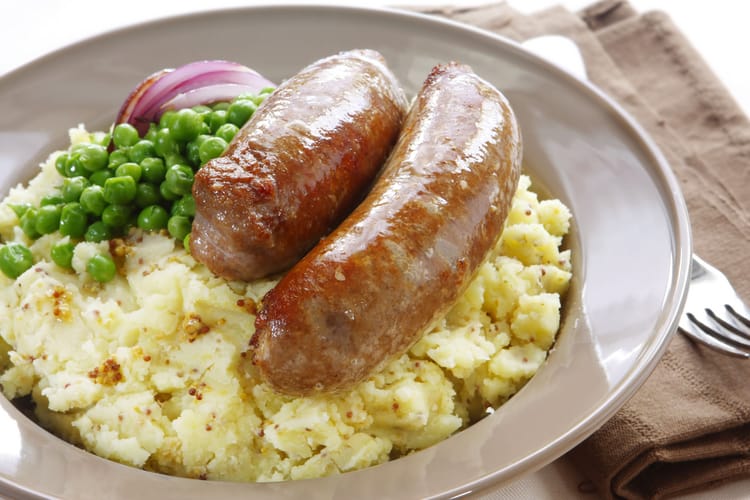
Both a regular favorite for either lunch or dinner in many English pubs and a filling homemade meal, bangers and mash consist of large pork or beef sausages filled with savory juices, served on top of buttery mashed potatoes, and accompanied by a bittersweet onion sauce that is golden brown in color. The sausages started to be called bangers just after World War I, due to the fact that water was added to stretch the meat, so the fried sausages would burst loudly with a bang. It is recommended to use the bangers made by butchers who use natural casings and a mix of pork and just enough fat to preserve the flavorful juices. Aromatic pork bangers with hints of nutmeg and sage are a Cumberland specialty, while Yorkshire and Lancashire versions are based on beef. The potatoes should not be puréed, but broken down by hand with a potato masher, while butter and milk are added during the mashing process.
Bubble and squeak
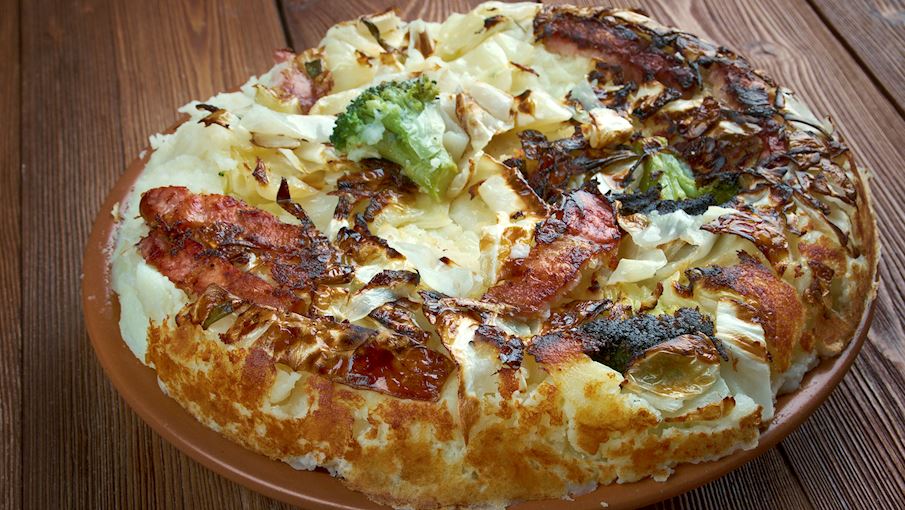
is a traditional British dish consisting of potatoes and green vegetables. Originally, cabbage was used as the main vegetable, but modern cooks might use Brussels sprouts or any other kind of vegetables along with potatoes. The combination of potatoes and vegetables is mashed together, fried, and traditionally served alongside cold meats. The potatoes used in the dish are often leftovers from a Sunday roast.
Bread and butter pudding
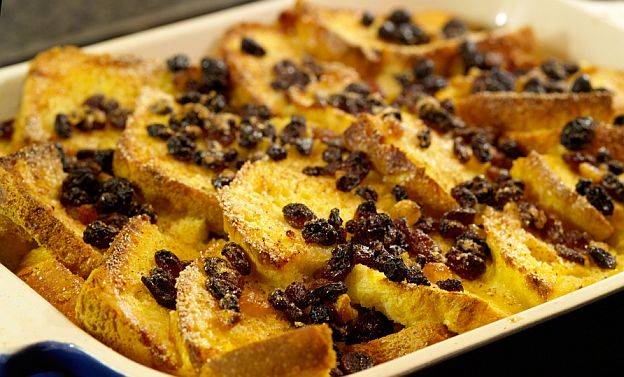
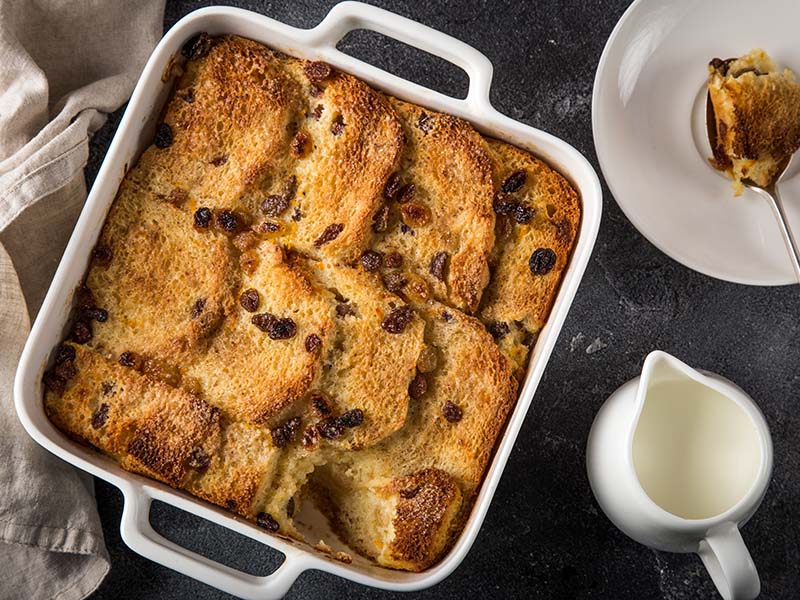
a slightly unusual dessert, the inseparable ingredient of which is … old bread. How is it made? Brush the bread with butter and add the milk and egg. Spread everything on a baking tray, sprinkle the dough with cinnamon and raisins.
Scones with jam and cream


Nothing better than crispy buns sprinkled with sugar and raisins. Before tasting, they must be spread with jam, preserve or whipped cream.
Eggy bread

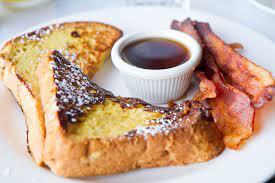
This is the British version of French toast. Also known as Poor Knights of Windsor, the dish is usually prepared with a combination of crustless sandwich bread, milk, icing sugar, eggs, butter, cinnamon, and often a bit of sherry and strawberry jam.
The bread slices are soaked in a whisked mixture of icing sugar, milk, sherry, and eggs. The bread is then pan-fried in butter until browned on both sides. Once cooked, the bread is sprinkled with sugar and cinnamon, then topped with strawberry jam or blackberry compote, if desired.
Victoria sponge cake


an unofficial legend has it that it was once Queen Victoria’s favorite dessert, hence the name. It is a simple but very tasty cake. You need a sponge cake for it, spread it with strawberry jam, and translate it with whipped cream sprinkled with powdered sugar. We decorate with fresh strawberries.
Cottage pie


is a casserole consisting of two layers, the first is minced meat, goulash sauce and vegetables such as onions, peas, and carrots. The second top layer is made of mashed potatoes, which are decorated with a fork, creating characteristic grooves. The whole is baked until the potatoes turn golden and create a baked crust.
Fry Up
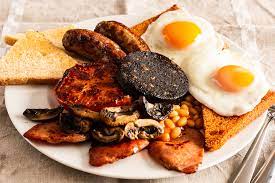

this meal is also a great English breakfast. It is a mix of fried sausage, bacon, mushrooms, porridge, and tomatoes served with a fried egg and traditional English canned beans. You can also serve toast with butter and hash browns
Cheese and onion pie
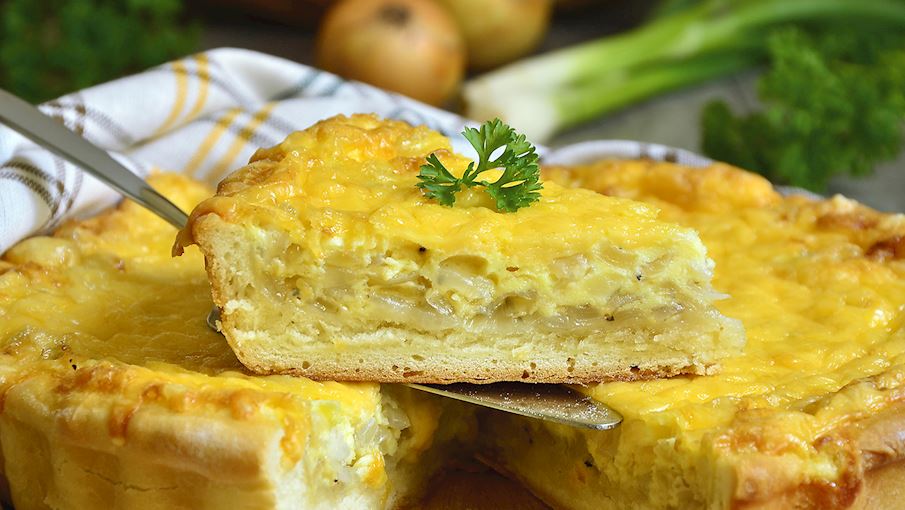

This is an English comfort food dish at its best. Although it is consumed all over the country, some sources suggest that it’s a north-western tradition. The pie is typically made with a combination of shortcrust pastry, cheddar, or crumbly cheeses, and cooked or fried onions. Common, yet non-traditional additions include potatoes, crème fraîche, and a sauce made with flour, milk, and cream. It is recommended to serve the pie warm or cold, preferably accompanied by chips and a salad on the side.
Pie and mash
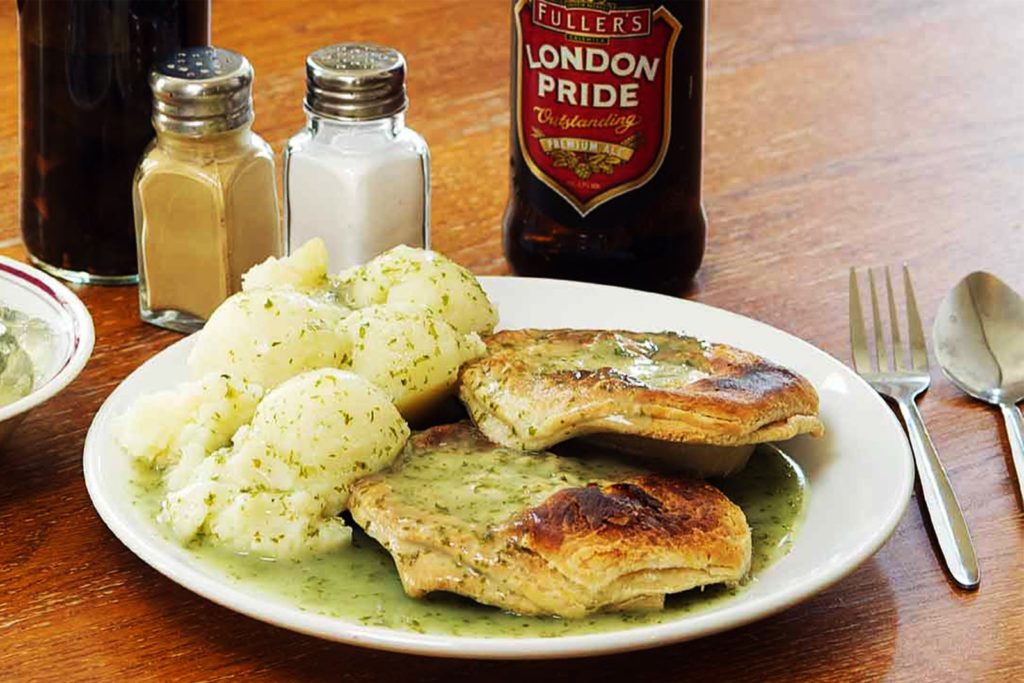
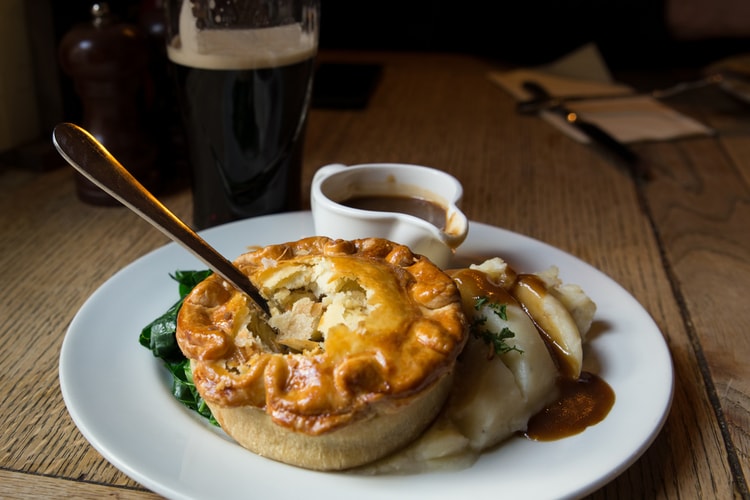
it is a baked pie stuffed with meat, mushrooms, vegetables, and giblets of your choice. Served with mashed potatoes and the famous liquor-parsley sauce. Pie can be made from shortcrust pastry or puff pastry as you like.
Pudding
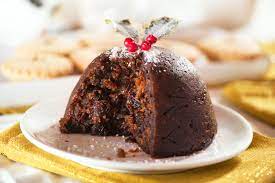
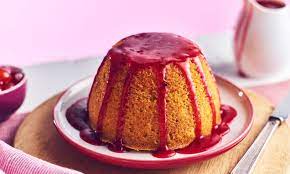
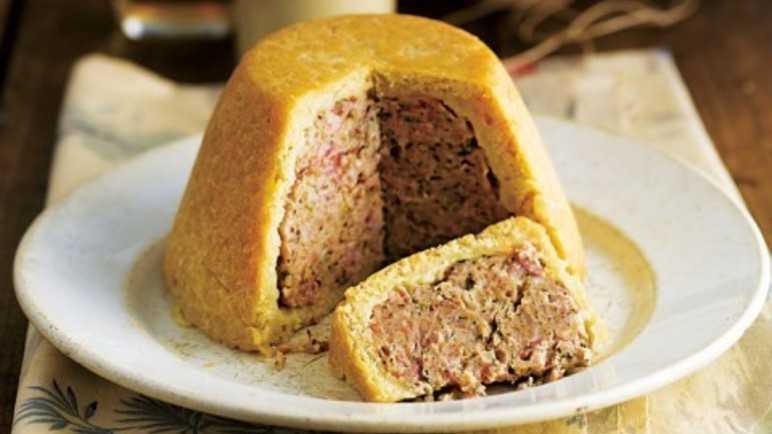
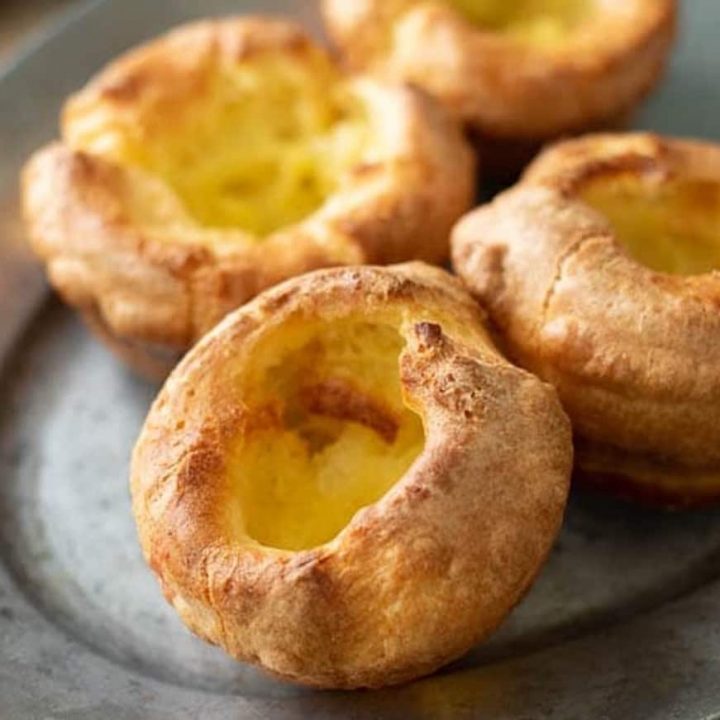
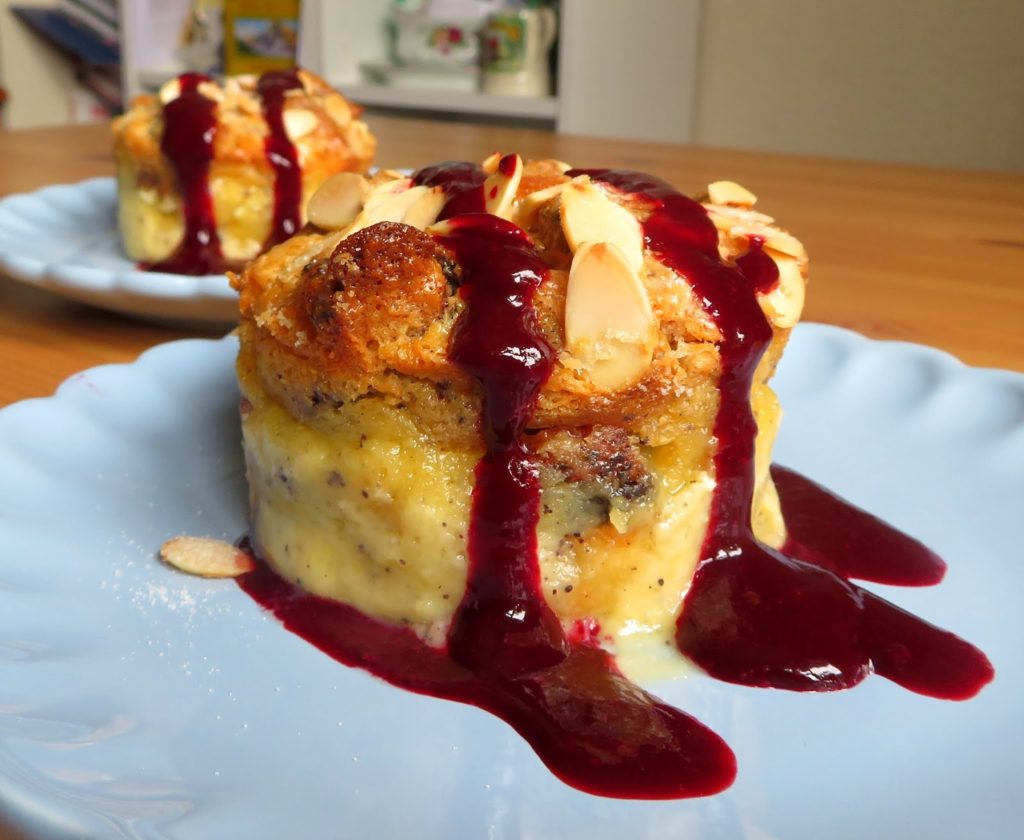
national dish of the English. It can be sweet or salty. Usually, it has the consistency of a thick pudding. Made of flour, milk, eggs, groats, or rice and … well, meat, fish, fat, or in the case of pudding for dessert, something sweet. A strange dish that often does not meet the tastes of people from the continent. Some ingredients can even make us sick, like beef tallow and kidney … But the English love their puddings and there are as many varieties as there are houses in England, if not more.
Chicken Tikka Masala
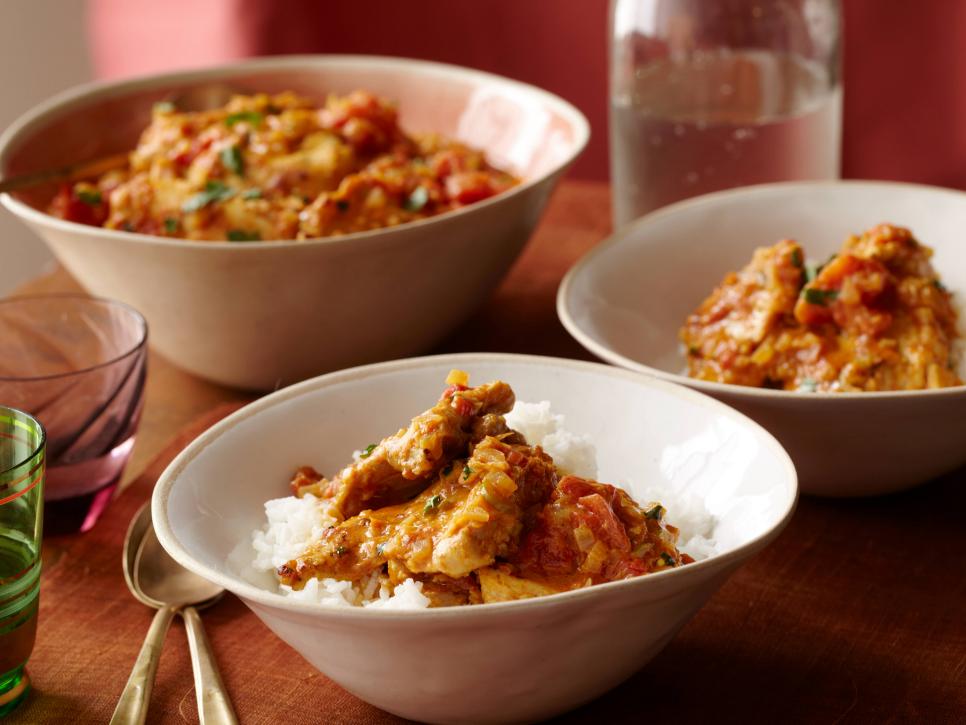

Known for some of the most authentic Indian dishes outside of India, India’s influence on British cuisine is enormous. A subtly flavored creamy curry, this dish is now nationally recognized as one of England’s national dishes.
Phall

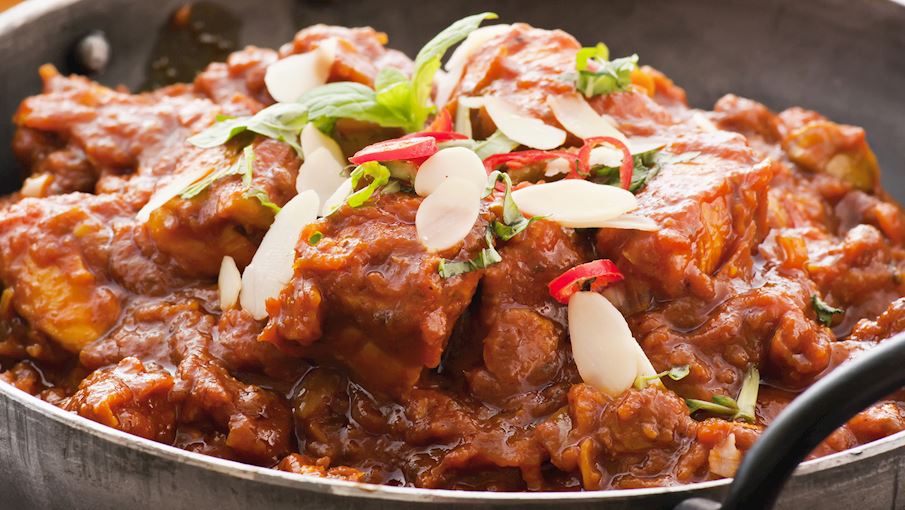
It is the hottest curry in the world, originating from Indian restaurants in the United Kingdom. It is based on lamb or chicken meat, with the addition of tomatoes, ginger, and a combination of numerous fresh and dried hot peppers. Many people say that it is painfully spicy, which isn’t surprising considering that one of the peppers used in phall has a Scoville rating of 1,000,000.
Trifle

a dessert eaten in England, made of layered sponge cake moistened with wine, fruit jelly, fruit, topped with custard sauce and decorated with whipped cream.
Salmagundi


is a traditional cold platter originating from England? It’s a cross between a deconstructed salad and a platter of cold meats and vegetables, dating back to the 17th century. The name is a corruption of the French term salmigondis, meaning hodge-podge. Although there are numerous variations, salmagundi is often prepared by serving a whole roast chicken cut into pieces, hard-cooked eggs, strips of ham, anchovies, grapes, tomatoes, radishes, scallions, olives, pickled onions, celery, and parsley on a large platter.
Cherries Jubilee
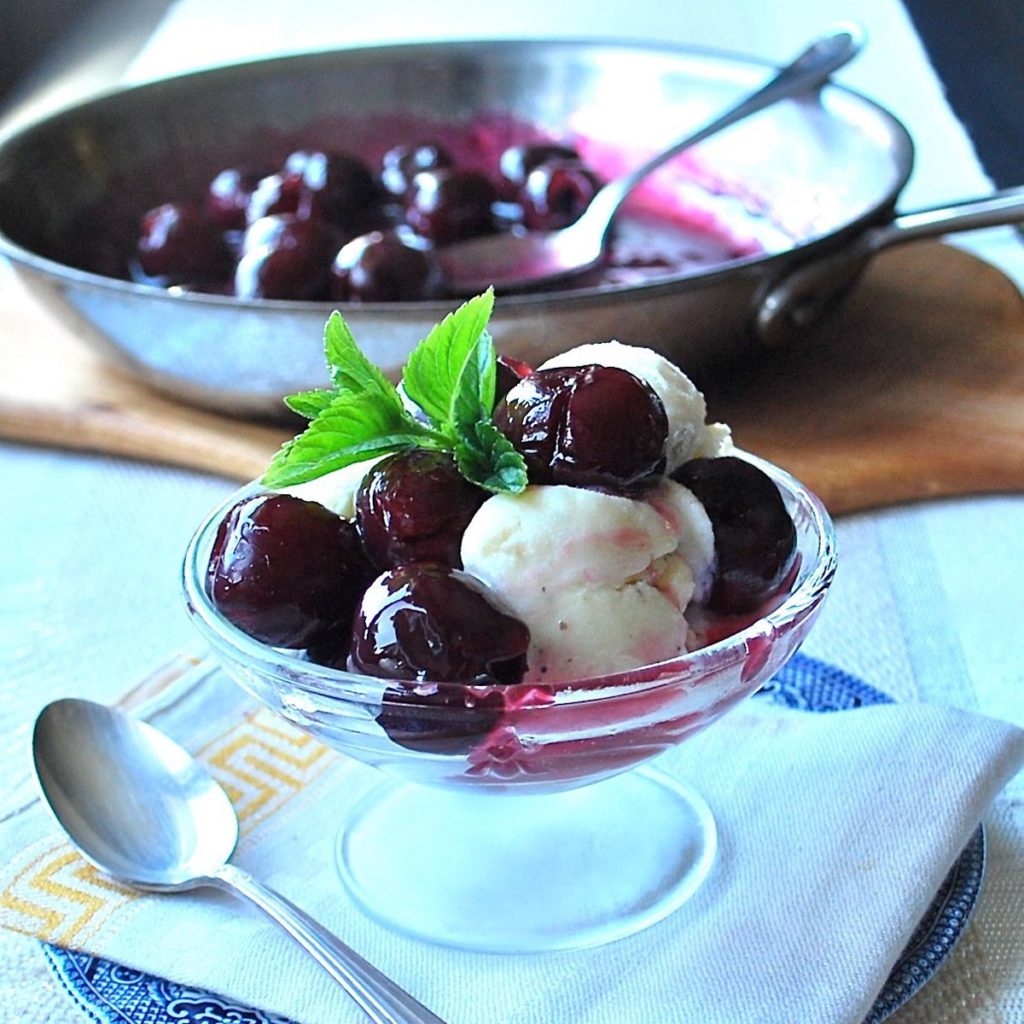
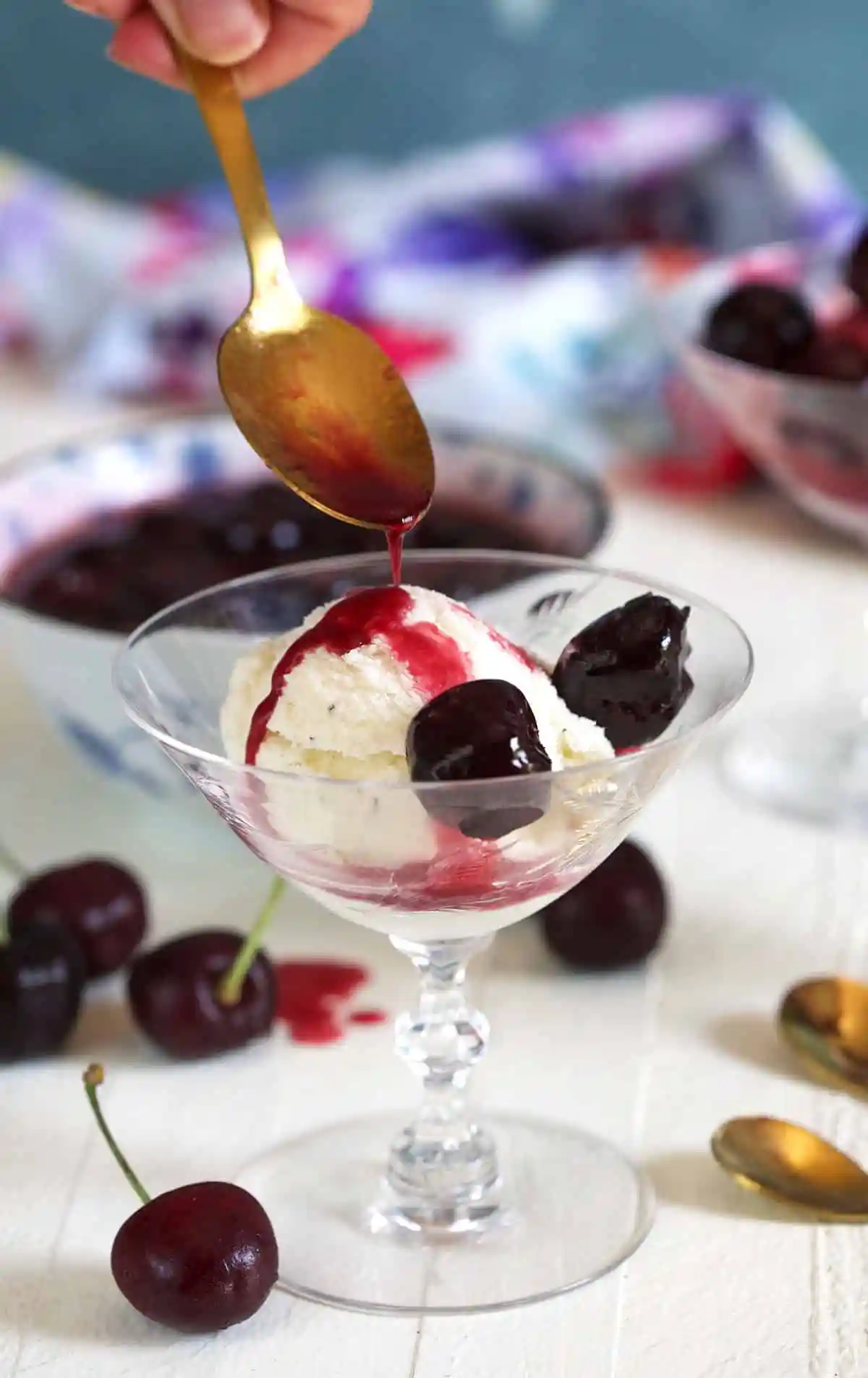
Cherries jubilee is a decadent dessert made with a combination of dark cherries and Kirshwasser liqueur that’s flambéed before being served as a sauce over scoops of vanilla ice cream. It was invented by Auguste Escoffier, who prepared the dessert for Queen Victoria’s Jubilee celebration, most probably the Golden Jubilee in 1897.
Today, additional ingredients sometimes include grated orange zest, orange juice, and cinnamon. It’s recommended to serve cherries jubilee in a tall dessert glass.
Lemon Curd
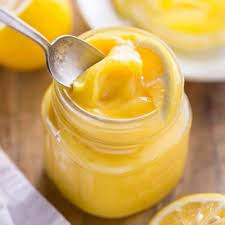

sweet and sour lemon cream. It is fairly easy and quick to do. To prepare it, you will need lemons, eggs, sugar, and butter. The whole thing is preferably heated by steam until it reaches the right consistency. Lemon curd can be used as a cake-cream, cupcake filling, tart, or without. You can use it instead of jam for spreading on pancakes or bread. It is also suitable as an addition to various desserts and ice cream.
Piccalilli
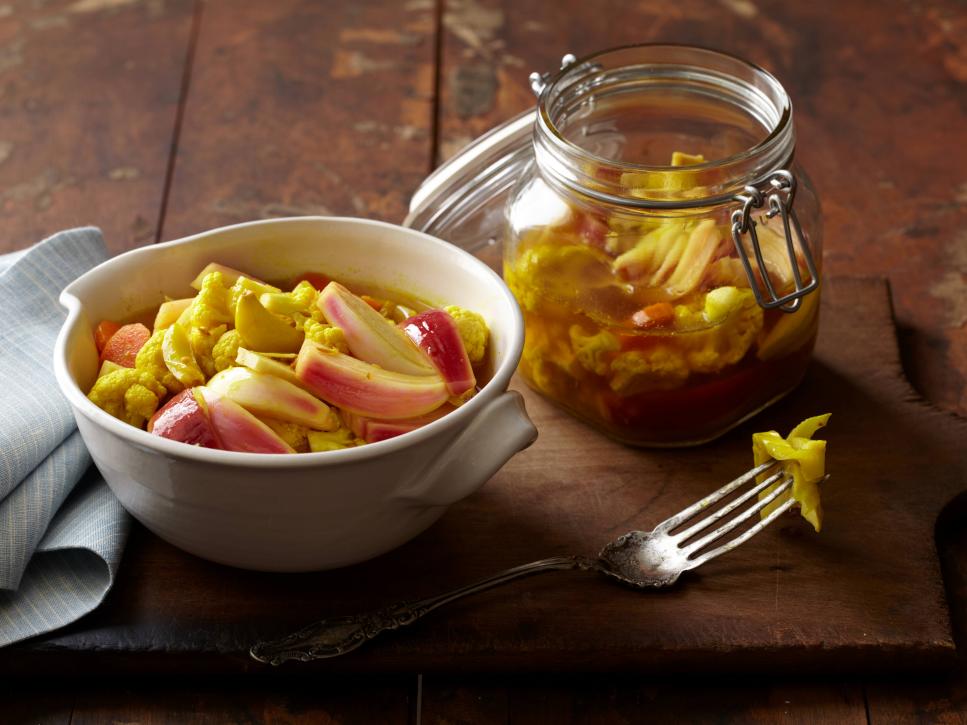
It is a flavorful English relish consisting of chunks of small pickled vegetables such as cauliflower, onions, cabbage, carrots, and cucumbers, combined with a rich sauce made with turmeric and mustard. Its taste is tart, pungent, and vinegary. The relish is usually served as an accompaniment to sausages, pies, cured meats, and various cheeses.
Game Pie

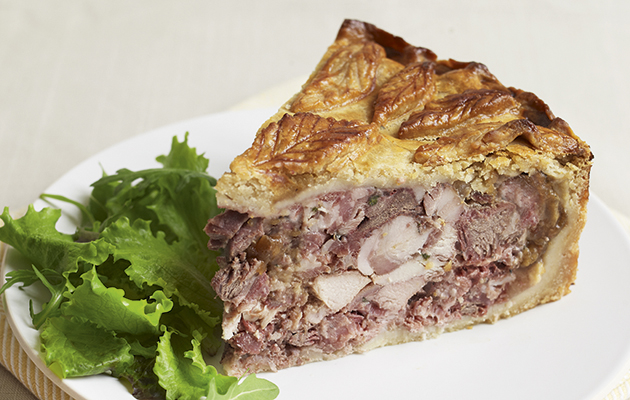
Traditional English dishes consist of a pastry shell filled with rich gravy and slowly cooked game meat such as venison, rabbit, and pheasant. The dish is typically prepared during the colder months since the British game season usually runs through autumn and winter. It is believed that game pie became popular during the 16th century in Britain, when it was prepared with whatever meat could be found, such as pigeons and blackbirds. Today, the availability of games makes it easier to prepare even the more elaborate pies that are often heavily decorated or engraved to impress the consumers.
Scouse


You will often hear the residents of Liverpool in England referred to as ‘Scousers’. That nickname comes from the city’s traditional dish – scouse. It’s a sort of meat and vegetable stew. There is some dispute about the correct recipe, but scouse is usually made with stewed meat, carrots, and potatoes. It’s served with beetroot and pickled red cabbage. Scouce was originally a peasant food and would have been made with cheap cuts of mutton. And whilst these would have been quite bony and fatty, they gave the stew the best flavor and are still popular choices today. It is also fairly common to enjoy scouse ‘blind’, which means meat-free. Being a port city, Liverpool has historically seen its fair share of sailors. It was the Northern European dish ‘Lobskause’, or ‘Lobscouse’ introduced by Norwegian sailors that were gradually adapted to become the ‘scouse’ that Liverpudlians enjoy today
Jam roly-poly

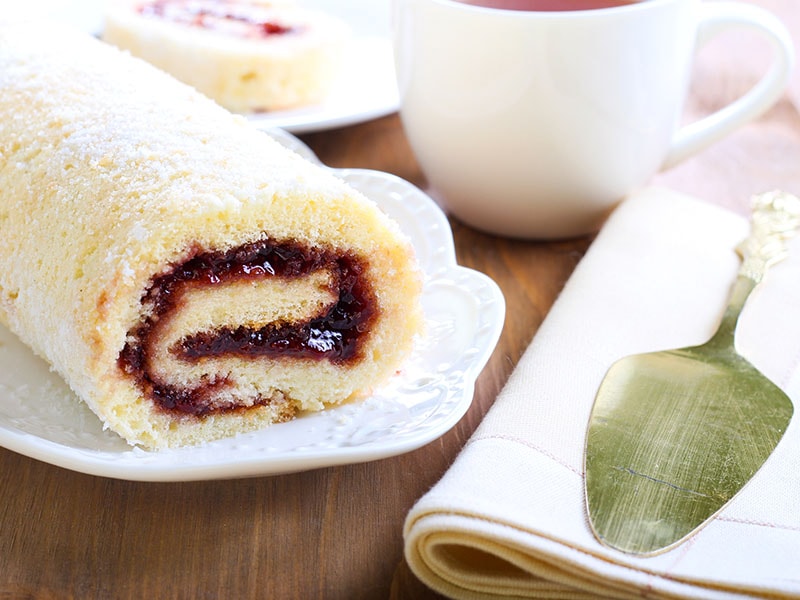
This popular dessert and a modern British classic! It was traditionally served after school lunch throughout the later part of the 20th century. Its ingredients are simple: a dough made from suet is spread liberally with jam, rolled up like a Swiss roll, then steamed or baked. Jam roly-poly is served topped with plenty of steaming custard, which – along with the jam – provides the sweetness. The dough contains no sugar at all. Even its biggest fans will describe it as ‘stodgy’, but that’s exactly the point of this dessert. It is hearty, comforting, and designed to warm you up on a chilly day!
Bedfordshire Clanger
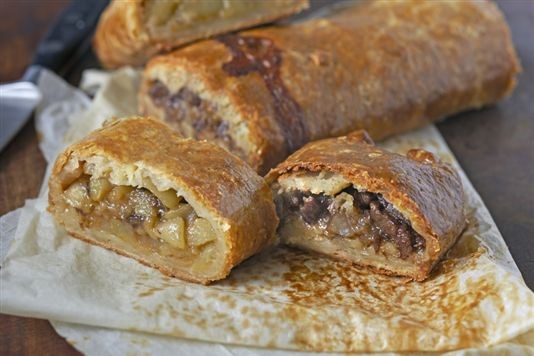

Similar to the sausage roll, a Bedfordshire Clanger is a pastry encased British delicacy but filled with meat, potatoes, and onions. While ‘clangers’ are typically embarrassing, there’s no shame in eating one from the county of Bedfordshire.
Eccles Cakes


These buttery-baked treats look like a small round pie. They contain currants, mixed with candied citrus peel and spices like cinnamon, nutmeg, allspice, and cloves. This sweet filling is then encased in a sweet, flaky pastry topped with demerara sugar. Eccles Cakes are named after the town of Eccles in Lancashire where they were first sold commercially in 1793 by shopkeeper James Birch. Their history, though, dates back even further and is quite fascinating. The country at that time was ruled by very strict Puritans. They decreed that Eccles Cakes were inappropriately indulgent and sinfully tempting, then went on to ban them! Fortunately, the ban was lifted at some point and these little pastries have gone on to gain a worldwide following, with cakes from the ‘Real Lancashire Eccles Cakes’ factory being shipped across the globe. Eccles Cakes are best enjoyed with that most ubiquitous of British beverages – a nice hot cup of tea
Coronation Chicken


Coronation chicken is an Indian-style poultry-based dish originating from England. It’s usually made with a combination of cooked chicken cut into pieces, mayonnaise, tomato paste, curry powder, onions, chicken stock, lemon juice, yogurt, dried apricots, and oil, although the list of ingredients may vary.
The ingredients are cooked or stir-fried, then combined with the chicken pieces. Before serving, the dish should be refrigerated for at least one hour. It was created in 1953 by Constance Spry and Rosemary Hume to celebrate Queen Elizabeth II’s coronation.
Bacon Butty
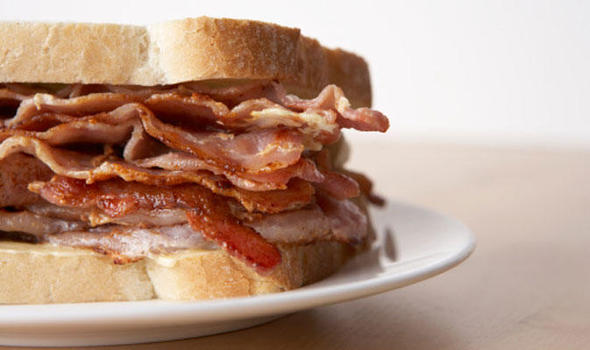

Britain’s favorite quick breakfast and hangover cure is the bacon Butty. The idea behind this popular dish is very simple. Pile of hot and crispy bacon stuffed between two slices of white toast bread.
Bakewell Tart
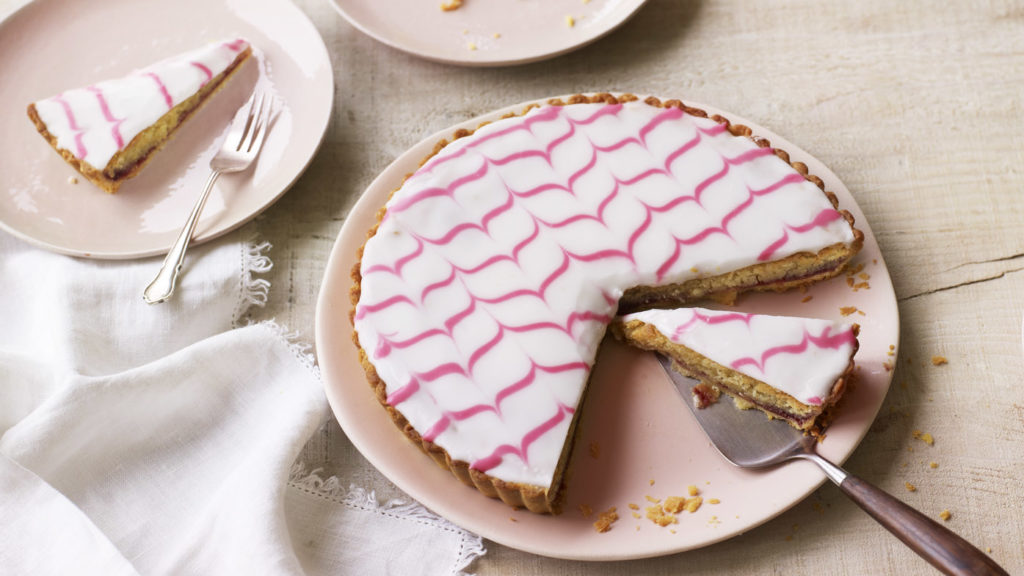
This classic British dessert combines a buttery, tender shortcrust pastry with a filling of raspberry jam, frangipane (almond cream), and toasted almond slices.
Hot Cross Buns
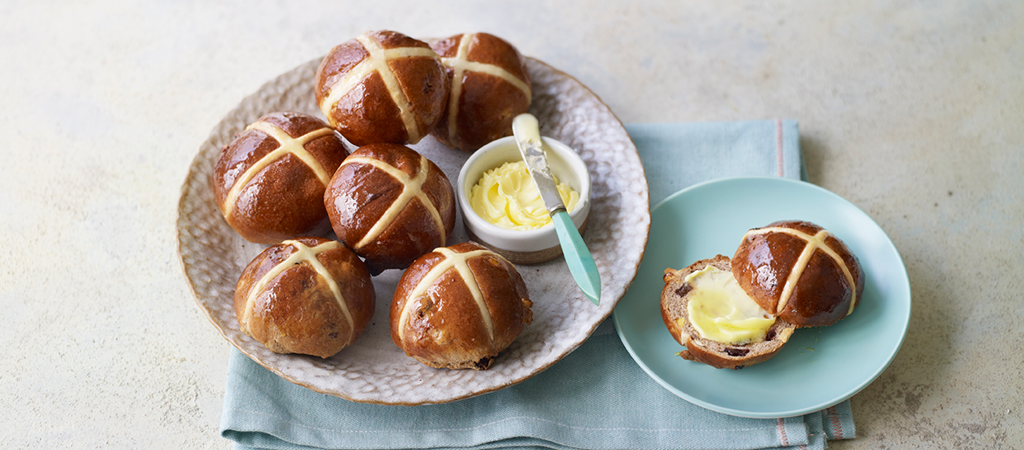
A hot cross bun is a spiced sweet bun usually made with fruit, marked with a cross on the top, and has been traditionally eaten on Good Friday in historically Commonwealth countries such as the United Kingdom, Ireland, Australia, India, New Zealand, South Africa, Canada, and some other parts of the Americas. The bun marks the end of the Christian season of Lent and different parts of the hot cross bun have a certain meaning, including the cross representing the crucifixion of Jesus, and the spices inside signifying the spices used to embalm him at his burial and may also include orange peel to reflect the bitterness of his time on the Cross.
Eton Mess
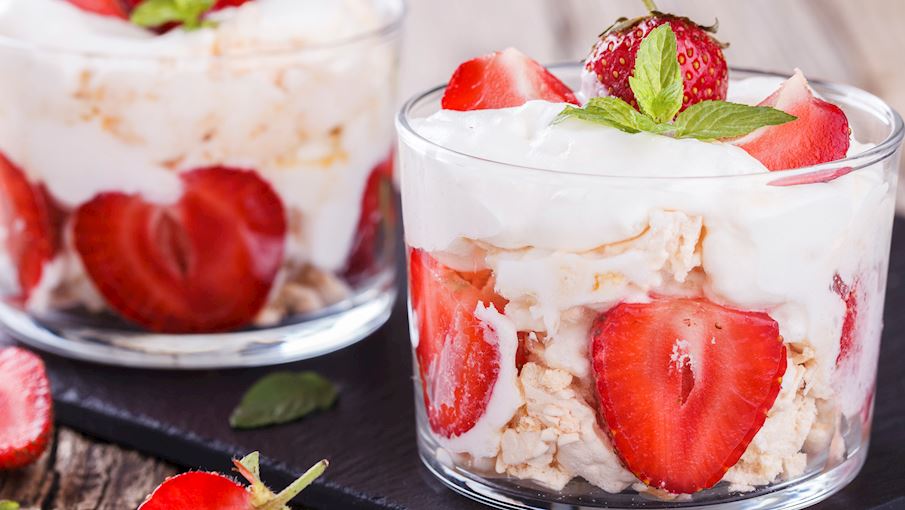
Eton mess is a quintessentially English dessert involving a mixture of strawberries, meringue, and whipped cream. First mentioned in print in 1893, it is commonly believed to originate from Eton College and is served at the annual cricket match against the pupils of Harrow School.
Cauliflower cheese
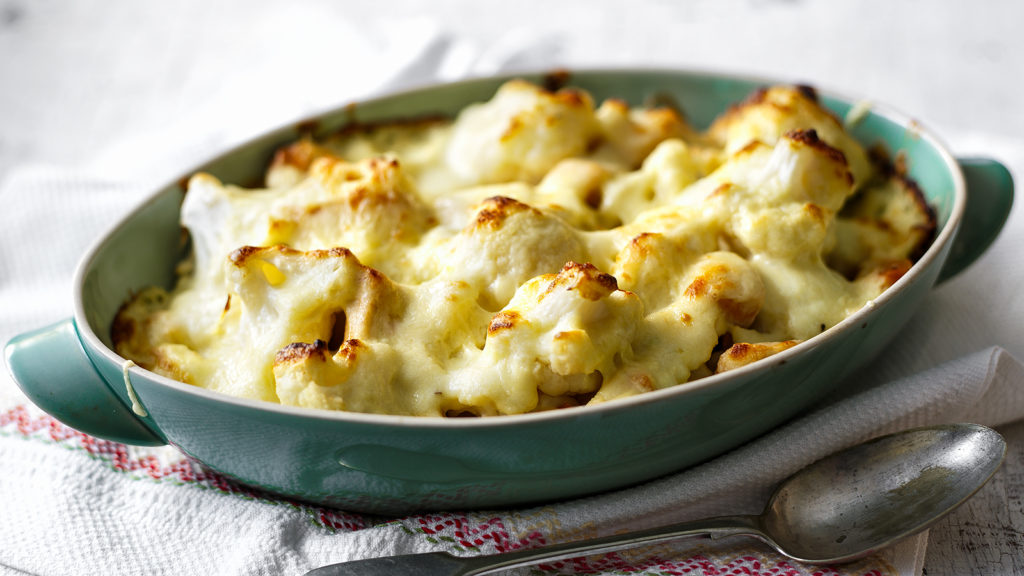
The begging of this dish goes back to the 17th century when Cauliflower was introduced in the United Kingdom. This traditional dish is created by using boiled florets of Cauliflower, covered with a creamy sauce doused in a sauce made from flour, milk, butter, nutmeg, and one or a few mature kinds of cheese such as cheddar. baked in the oven, until bubbly brown. Served as a main meal or as a flavorful side dish, to meat courses.
Madeira Cake

While you might think this is a baked good from Portugal, Madeira cake is a popular British treat. Named after Madeira wine, popular in England in the 1800s, when it was customary served with this cake. Madeira Cake is a close-textured plain cake that is signified by a dome and a crack on the top. Traditionally it is lemon in flavor and has some sort of candied lemon garnish.
Ploughman’s lunch

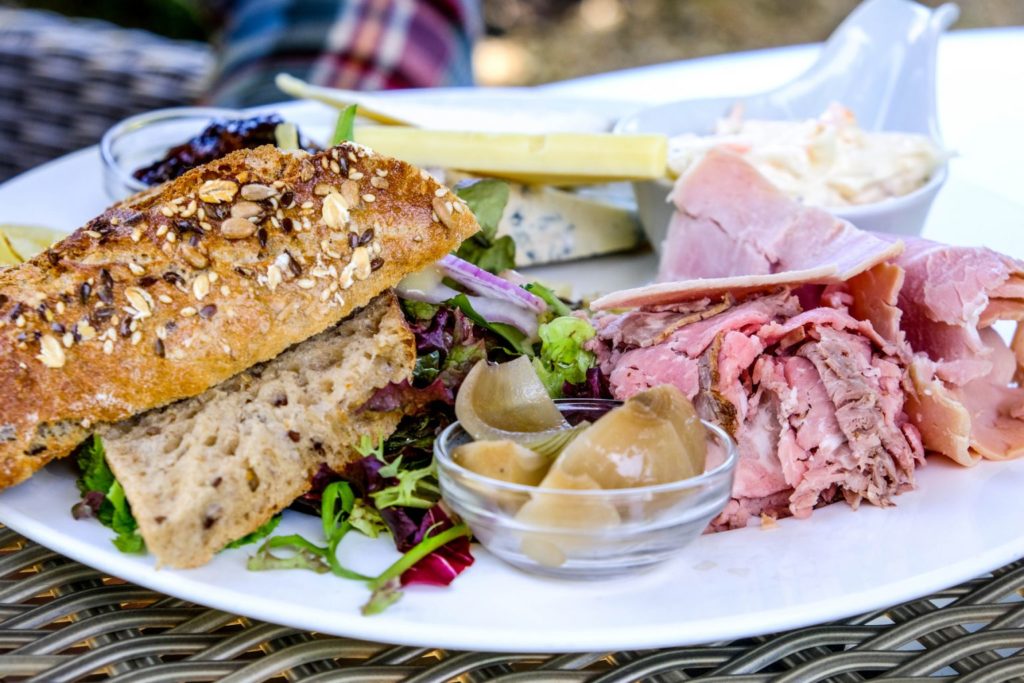
A ploughman’s lunch (often abbreviated to just ploughman’s) is an English cold meal that is based around bread, cheese, and onions, usually accompanied with butter and some form of pickle. Additional items such as ham, green salad, hard-boiled eggs, and apple can be added. As its name suggests, a ploughman’s lunch is most commonly eaten at lunchtime. The meal is particularly associated with public houses and is often accompanied by beer.
Apple Crumble
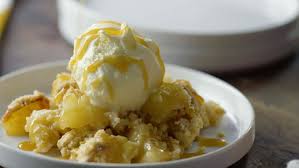
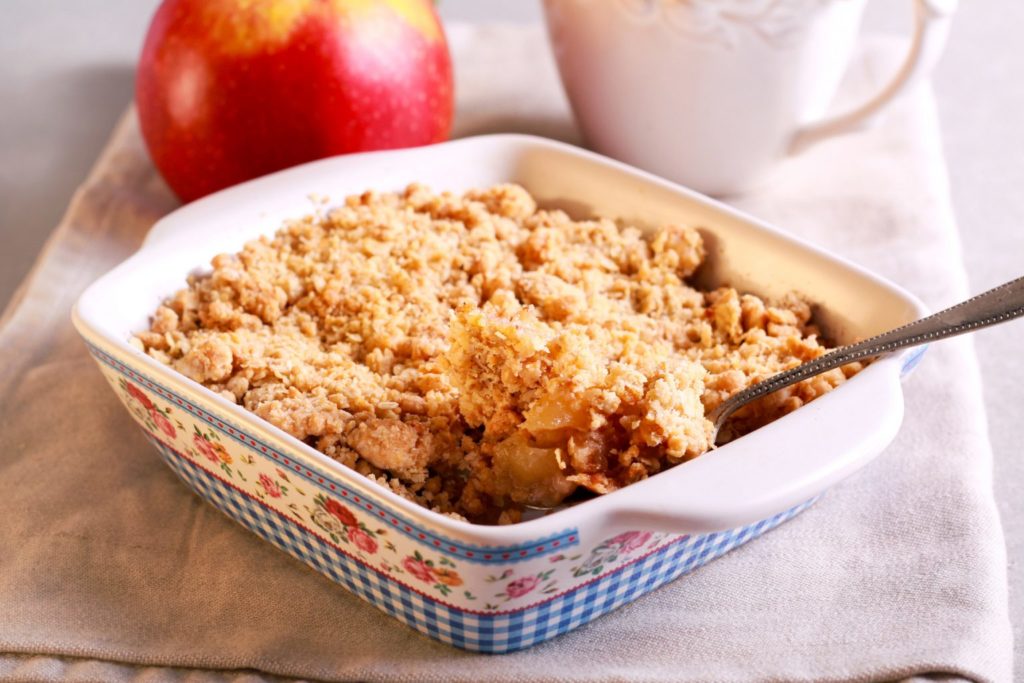

Maybe the most famous British dessert, a good old apple crumble just can’t fail to satisfy. Sweet, soft spiced apples finished with a crisp yet crumbly topping of flour, butter, sugar, and oats.
Best served with hot custard, although cream or ice cream are also good choices. The apples can be swapped for other fruit – also popular are plums, pears, and berries.
Queen of Puddings

As far as British puddings go, the Queen of Puddings can be considered the head of state. Eating this sweet, buttery, breadcrumb-based treat, complete with jam and a meringue topping, will almost make you feel part of the Royal Family. Ok, we might be getting slightly carried away.
Banoffee Pie

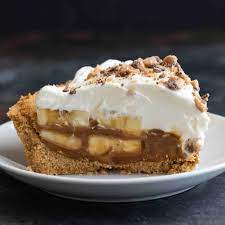

Banoffee Pie is quite possibly the best dessert in the world. Ever. Bananas, cream, and toffee on a buttery biscuit base. Erm, yes, please. The best British dessert by a country mile (some might say).
Pork Pie
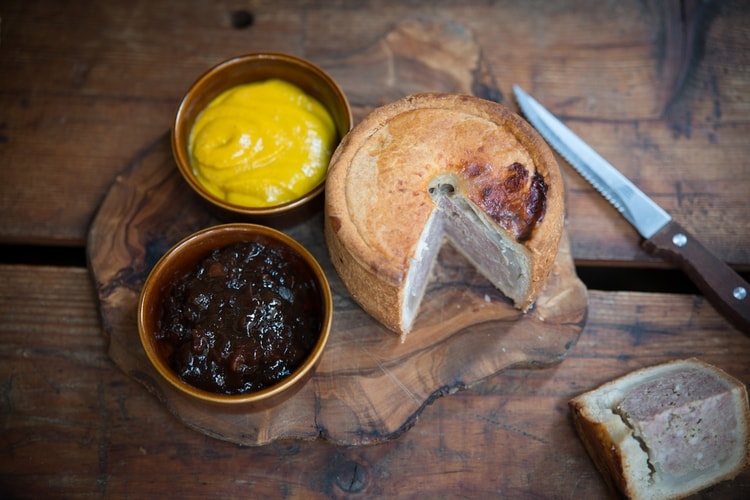

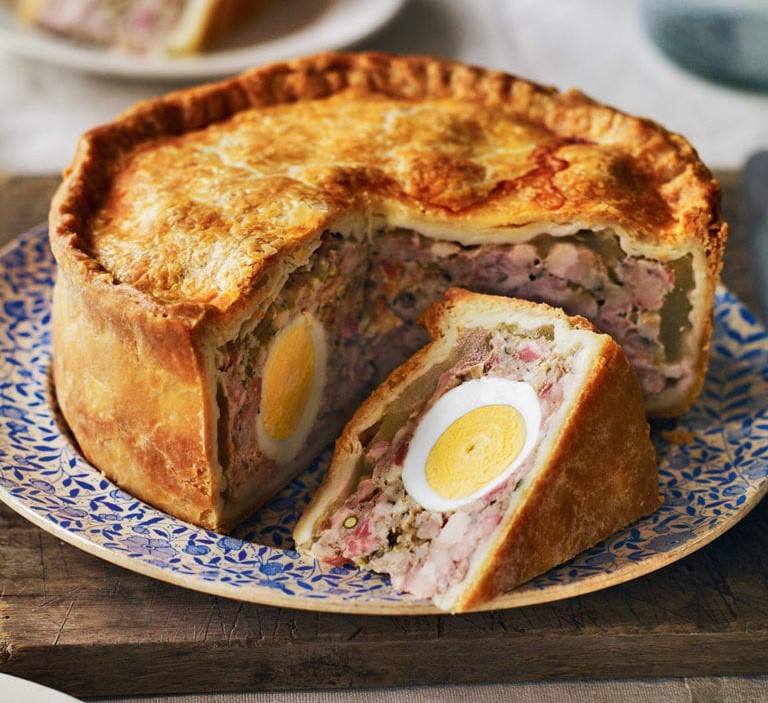
A traditional British pork pie is made using hot water pastry which is then raised by hand using a mold or a jam jar for support. It’s different from a savory pot pie that Americans might be accustomed to insofar as it is usually served cold or at room temperature and eaten as a snack. The filling consists of roughly chopped pork and pork fat, surrounded by a layer of jellied pork stock in a hot water crust pastry.
Gypsy Tart
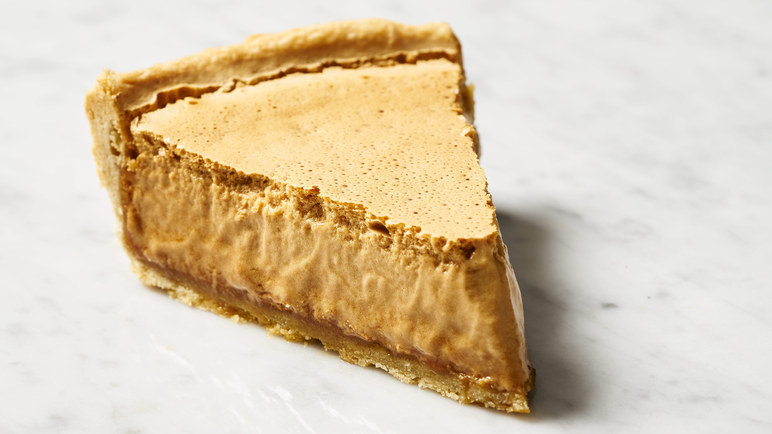
The Gypsy Tart is an especially sweet dessert that goes great with some cream or creme fraiche. It’s made from evaporated milk, muscovado sugar, and pastry. All the things a growing Brit needs.
Kippers

The old-school breakfast dish of choice, kippers now sits amongst the less favorite UK dishes. A kipper is a whole herring, a small, oily fish, that has been split in a butterfly fashion from tail to head along the dorsal ridge, gutted, salted, or pickled, and cold-smoked over smoldering wood chips.
Rhubarb Fool
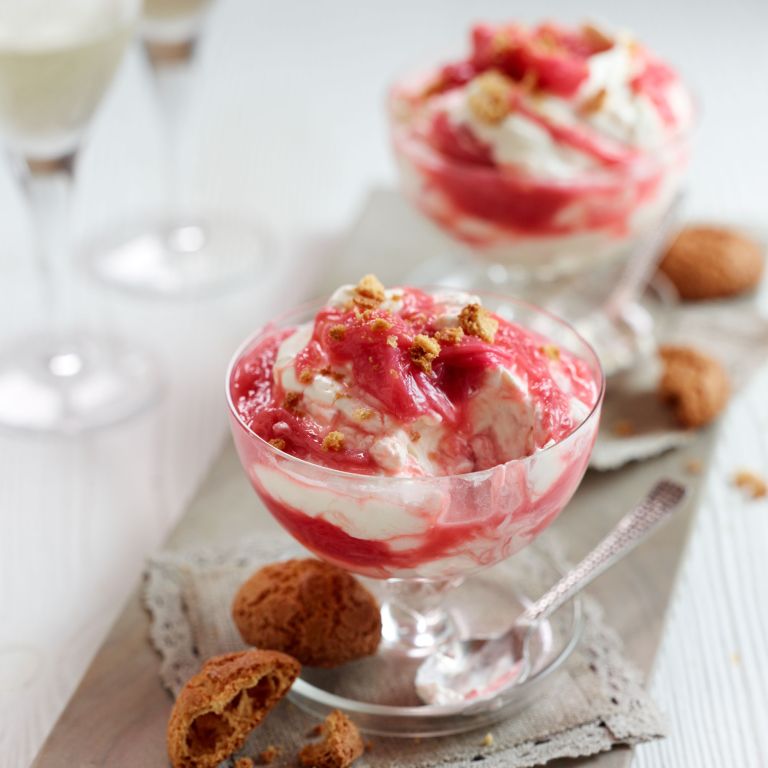

Rhubarb is a particularly tasty fruit and is very popular in the UK, particularly in summer. The most common pudding to make with rhubarb is a Crumble, other great cold options being a Rhubarb Fool or a Rhubarb Trifle, just to name a couple of examples.
Summer Pudding

The Summer Pudding is an absolute stunner of a British dessert. Berries are the star of the show, sitting inside a casing of white bread that soaks up all the tongue-tingling fruit juices. Incredible.
Beans on Toast


Beans on toast are without a doubt, a British food staple. A delicacy might be a stretch, but whether you go for a posh version or the classic option of using Heinz baked beans, not much beats beans on toast.
Chip Butty
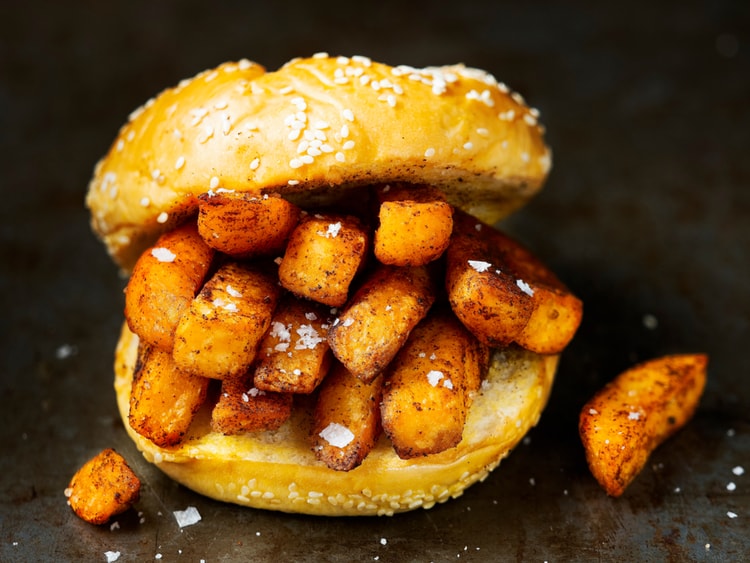
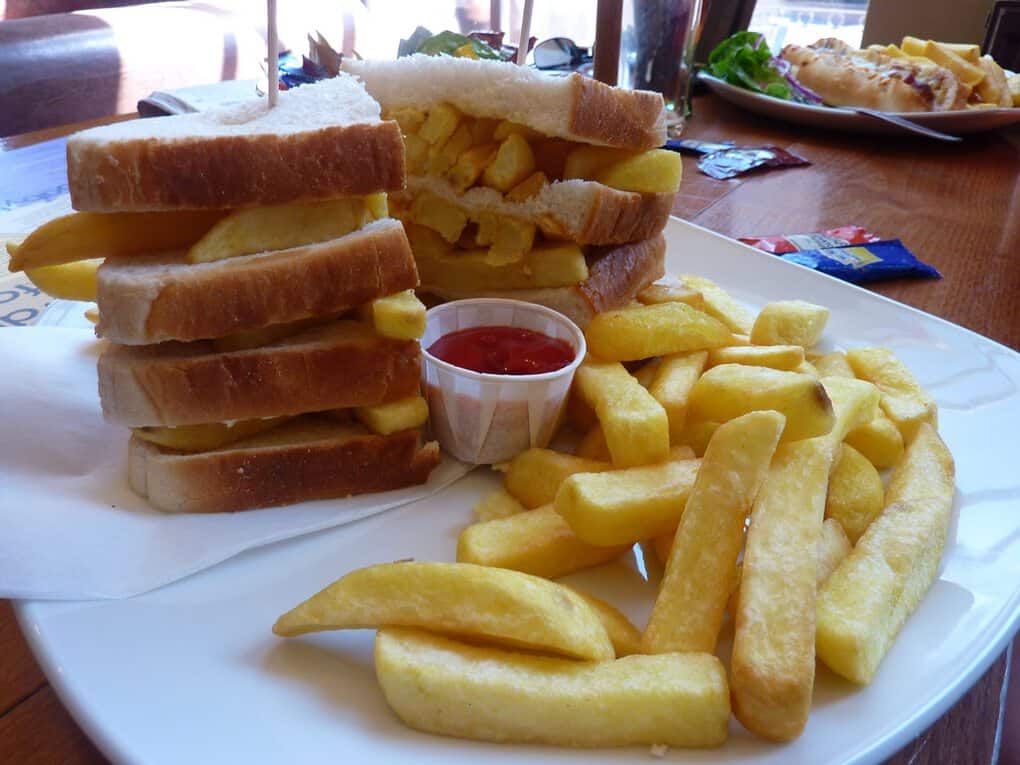
Not everything British food can be as sophisticated as Afternoon Tea, but there are few things more delicious than the delicacy that is the Chip Butty. In other words, a French fries sandwich, with ‘Butty’ being another one of those weird British food names.
Stargazy Pie

practically defines the word “elegance”, peculiarly distinctive. If you’re a seafood fan, this pie may be something to spark your interest. is a Cornish dish made of baked pilchards (sardines), along with eggs and potatoes, covered with a pastry crust. Although a few variations are using other types of fish, the unique feature of Stargazy pie is fish heads (and sometimes tails) protruding through the crust, so that they appear to be gazing at the stars.
Yorkshire Parkin

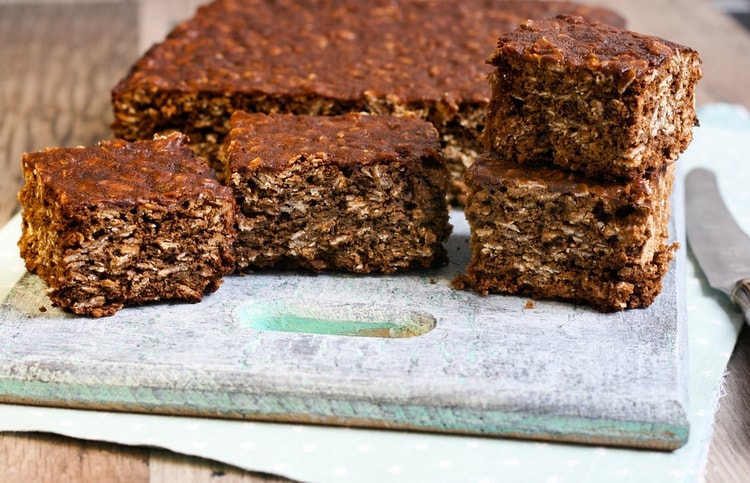
Parkin is an incredible cake made of gingerbread and black treacle, from northern England. You have to hand it to the northerners, they’re responsible for loads of the best British delicacies.
Lemon Drizzle cake

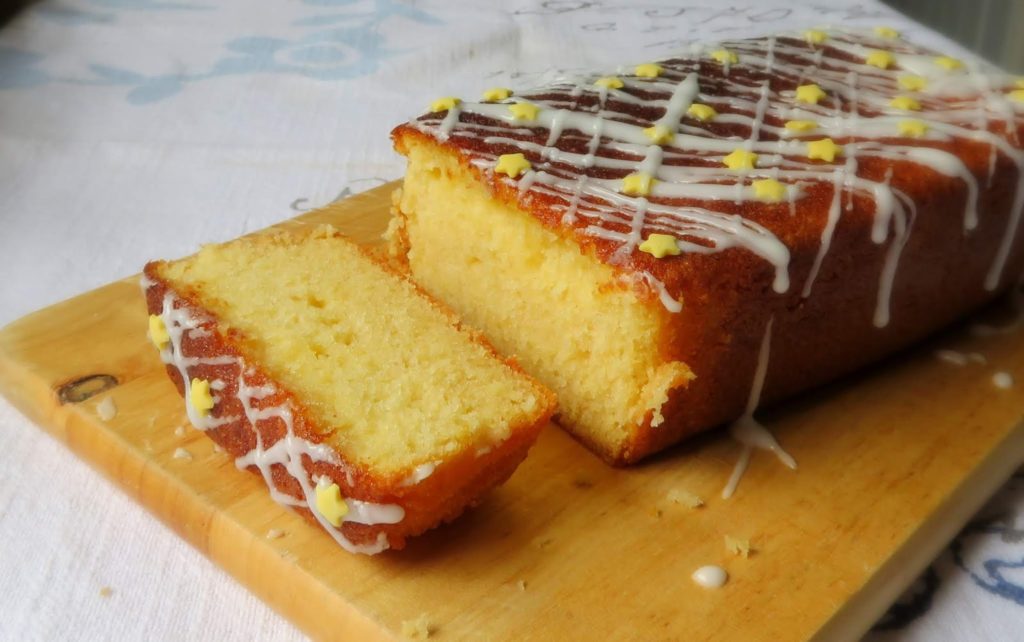
Lemon drizzle cake is a traditional British cake and a staple of afternoon tea. Although not much is known about its origin, it is believed that the first lemon drizzle was made by a Jewish woman named Evelyn Rose in 1967. This simple sponge cake is usually made with a combination of flour, sugar, butter, eggs, milk, baking powder, lemon zest, and lemon juice.
The ingredients are mixed in a bowl, then placed into a baking tray and baked in an oven. The lemon juice is mixed with icing sugar, and once the cake is done, the icing is drizzled over it to give the cake a refreshing, bright, lemony, and slightly sharp flavor.
Meat and potato pie
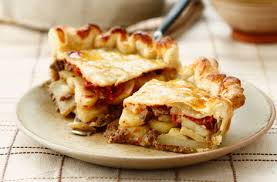
Meat and potato pie is a comforting English staple that’s perfect for a family meal. The pie shell is made from flour, beef suet, and cold water, while the filling is usually a combination of onions, beef (or sometimes lamb) chunks, and potatoes, whether waxy, floury, or both.
This meat pie is baked until it becomes golden brown, and before serving it’s left to stan for a short while. The filling can optionally be enriched with carrots. Meat and potato pie is usually made at home, and it’s often accompanied by red cabbage on the side.
Marmite

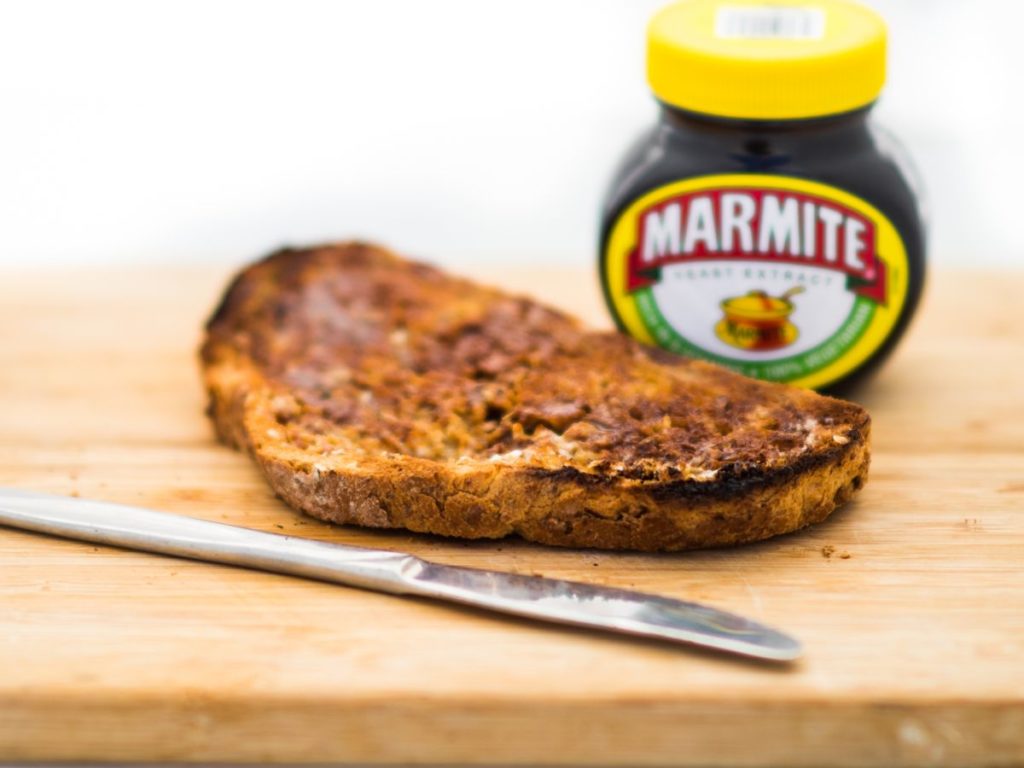
In the late 19th century, a scientist named Justus von Liebig discovered that brewer’s yeast could be concentrated, conserved, and eaten. Officially, the production of this sticky, thick spread started in 1902, when the Marmite Food Company was founded in Burton-on-Trent, Staffordshire.
The product was originally sold packed in earthenware pots and the 1920s they were replaced with glass jars that are still used today. In 1908, the New Zealand company Sanitarium Health and Wellbeing bought the rights to sell Marmite, but they slightly altered its taste by adding caramel and sugar.
Knickerbocker glory
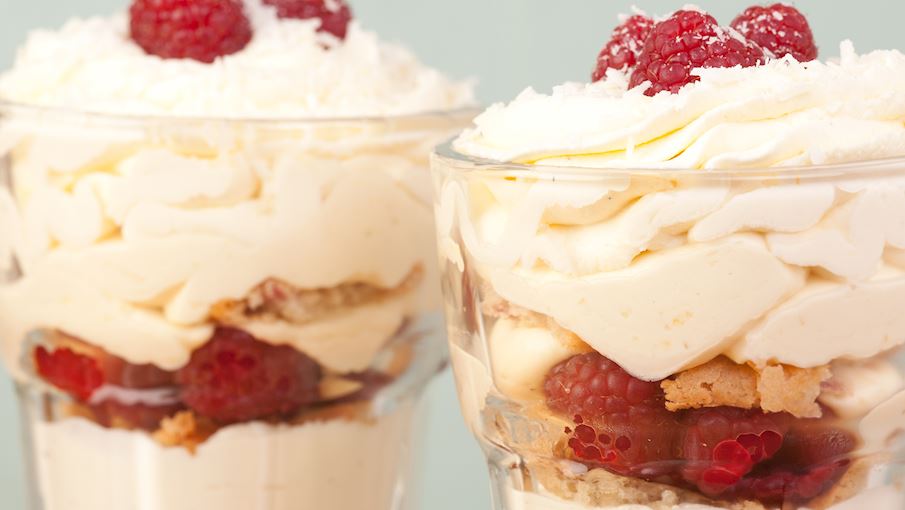


It is a classic British dessert that is simple to prepare, yet seriously impressive when served. It is made by layering ice cream, meringue, cream, and fruit in a large, tall glass. The dessert is traditionally topped with various syrups, nuts, and a single cherry on top.
Mulligatawny
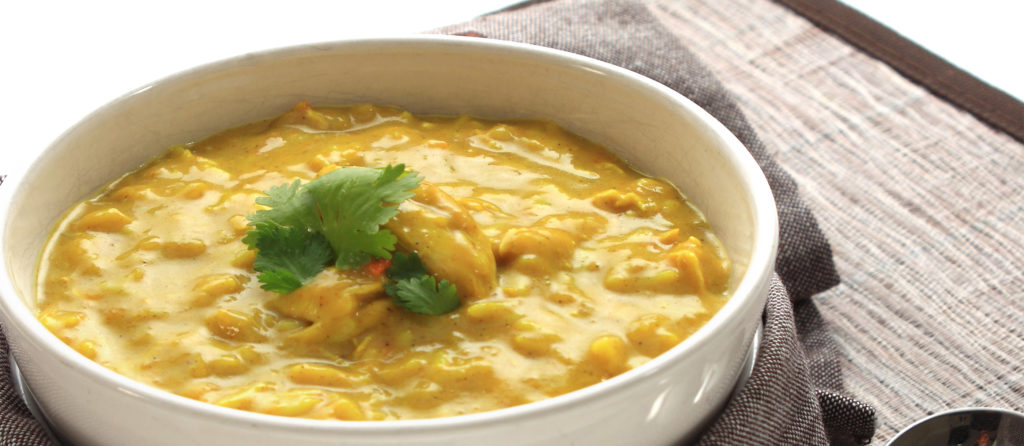
This classic curry soup originated in the 18th-century British Raj, the colonial regime of India. Mulligatawny takes its name from the Tamil miḷaku-taṇṇīr which translates to ‘black pepper water.’ Originally, the local Madras recipe on which the soup was based included only vegetables, spices, and rice, whereas later British versions added various meats, mostly veal or chicken.
Modern mulligatawny recipes tend to be even more complex, so the soup is now often made with the addition of lentils, apples, coconut milk, and sometimes even lemon juice. Eaten with a large quantity of boiled rice, this substantial meat-based soup becomes a meal in itself and is traditionally enjoyed with a dollop of tangy sour cream.
Flapjack

is a blend of porridge oats, golden syrup, sugar, and melted butter that is baked to perfection, and then typically cut up into squares or rectangles. A touch of salt and ground ginger are often added to the oat mixture for extra flavor, while white corn syrup or even maple syrup can be used as alternatives to the golden syrup. The simplicity of this sweet treat, and the few basic ingredients needed for its preparation, have made flapjack an all-time favorite in England and beyond. Chewy or crunchy, depending on individual preferences, this sweet oat bar is a teatime, lunch box, and picnic staple as well as the perfect snack to eat on the go.
Parmo

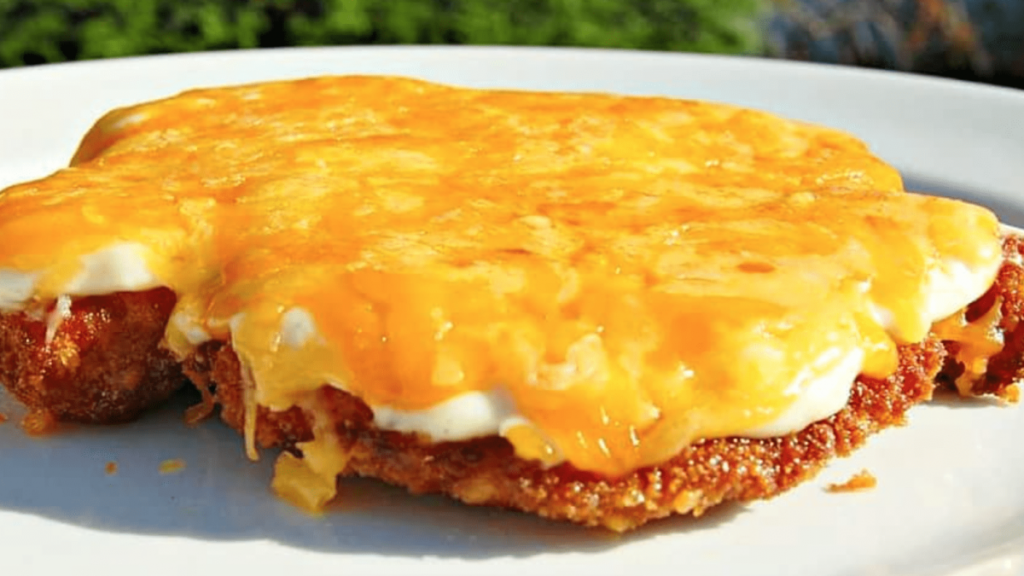
Parmo is a popular British dish consisting of a chicken cutlet that is deep-fried in breadcrumbs, covered in a creamy sauce, and topped with anything from cheese and bacon to pepperoni and garlic sauce. The dish is traditionally served with a large portion of chips and a salad on the side. It is believed that Parmo originated in a Middlesbrough restaurant in the 1950s. Although the name of the dish is derived from another dish, chicken Parmesan, it is typically topped with cheddar cheese, and never with parmesan.
Egg Sandwich
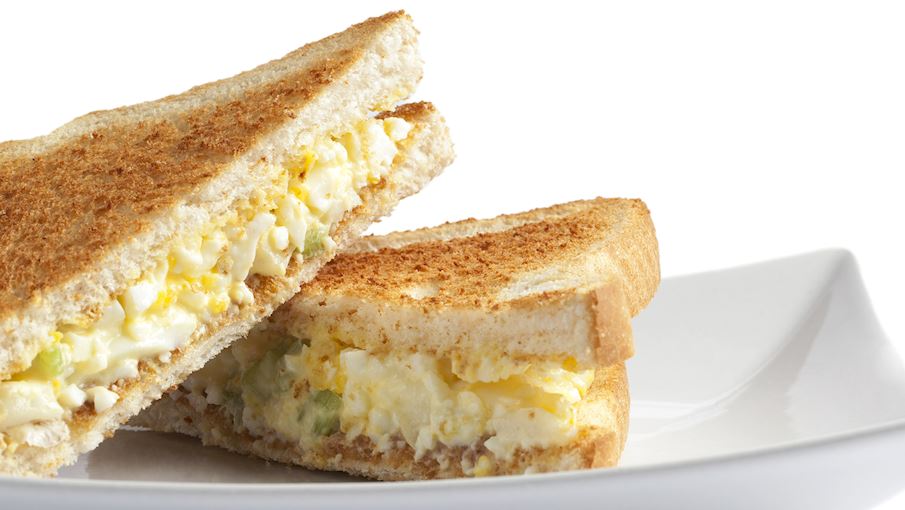
An egg sandwich is an internationally popular breakfast staple that typically consists of eggs between slices of bread. The sandwich is usually enriched with cheese, and it’s often complemented with some kind of meat such as cold cuts or sausage meat.
Nowadays, there are numerous variations on this sandwich, but it is believed that one of the first egg sandwiches was made in the early 19th century in East London by street vendors who wanted to earn some money and feed the hungry factory workers in the process.
English muffin

English muffin is a small, round, and flatbread that’s made from a soft yeasted dough. Once shaped into rounds, either by hand or with crumpet rings, the English muffin is baked on a griddle. Before toasting, they are halved and once toasted, they’re buttered, then served for breakfast with sweet or savory toppings. These muffins are an essential part of eggs Benedict. It’s not recommended to use a knife to cut them in half – most cooks agree that they should be split with a fork and gently pulled apart to create a surface with small peaks and craters, which gives them a crunchy texture and provides many pockets for jam and butter.
Mince Pie
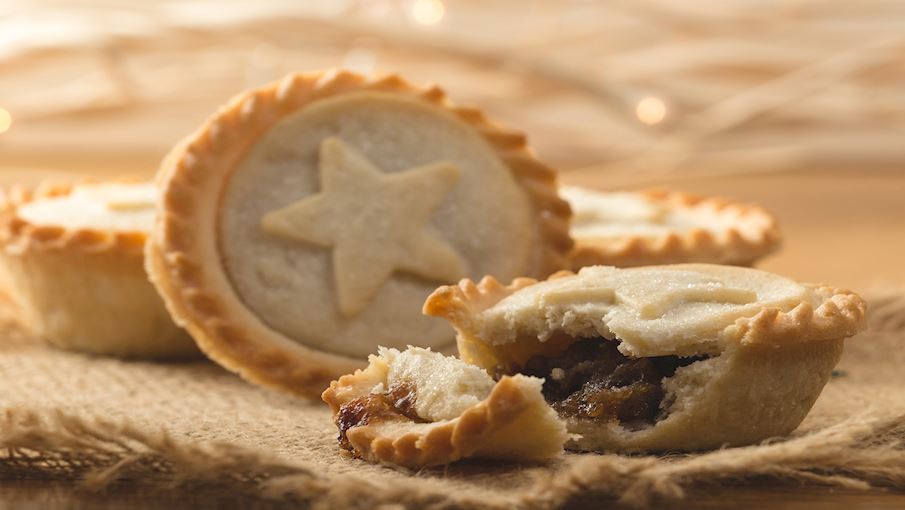
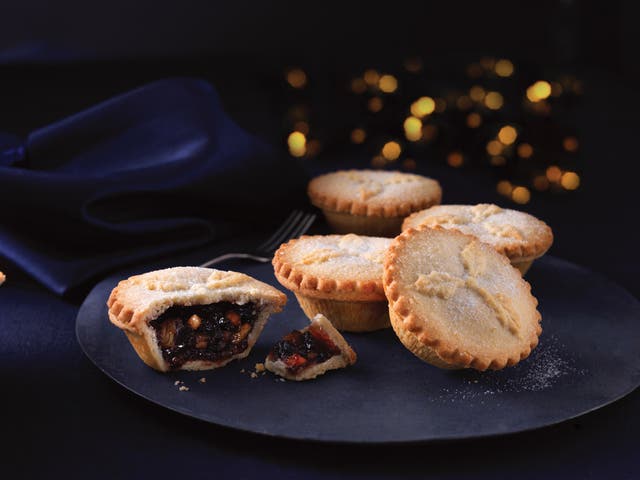
This oneis a staple Christmas snack in England, consisting of a crumbly pastry shell filled with dried fruits and spices (often called mincemeat). Originally, the pies contained both sweet and savory ingredients such as ground meat, lard, and cheese.
Due to their original, rectangular shape, people used to associate the pies with the manger Jesus had been laid in, and the snacks were prepared for Easter and Christmas, while the number of spices and ingredients was used as a way to show off the cooks’ wealth to other people.
Mushy peas

It’s a very popular side dish, especially for fish and chips. It is made out of Marrowfat peas. They are the mature green peas that have been intentionally left to dry out naturally in the field rather than being picked while they’re young like regular garden peas. Marrowfat peas are what are traditionally used to make English Mushy Peas (they’re also the variety of pea used to make wasabi peas). They are much larger than regular peas and have a particularly high starch content. This creates a very different consistency to mushy peas than regular peas will. Cooked into Mushy Peas, marrowfat peas will give you a smoother, creamier consistency.
Lancashire Butter Pie
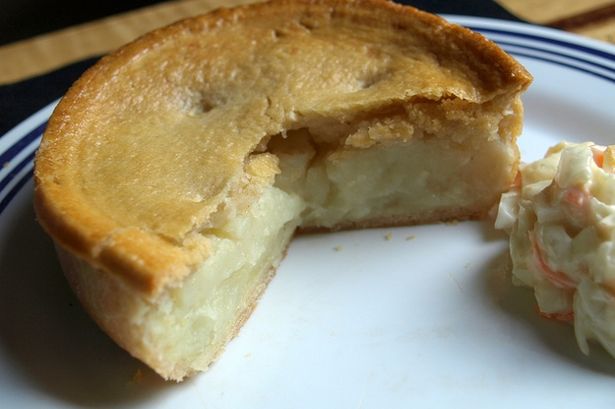
Lancashire Butter Pie is the perfect comfort food for a cold, wet and miserable winter’s day. Filled with potato, onion, and knots of butter. It can be served hot or cold, either way is comfort food.
Jaffa Cakes

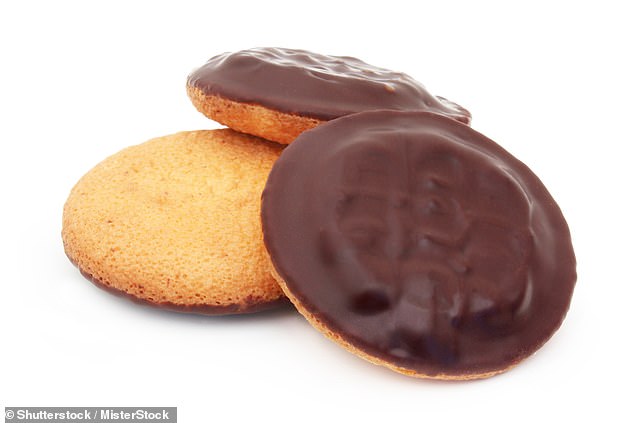
The traditional Jaffa cake is something of a British icon. Known as biscuits in Britain and called cookies in the United States, these treats have a layer of sponge topped with sweet orange jelly and finished off with plain chocolate (semi-sweet chocolate). Well-loved in Britain, Jaffa cakes are easy to find and relatively cheap to buy.
Chelsea Bun
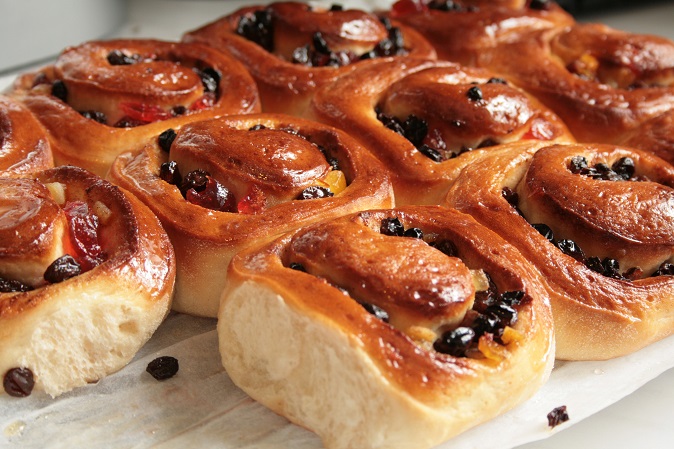
It is believed that this classic English dessert was invented at London’s Chelsea Bun House in the 18th century. The bun is made with a rich egg-based yeast dough flavored with lemon peel, and either cinnamon or mixed spice. Before baking, the dough is smeared with a combination of butter, brown sugar, and currants. A perfect tea-time treat, Chelsea bun is typically enjoyed warm, cut into slices, and smeared with even more butter.
Kedgeree
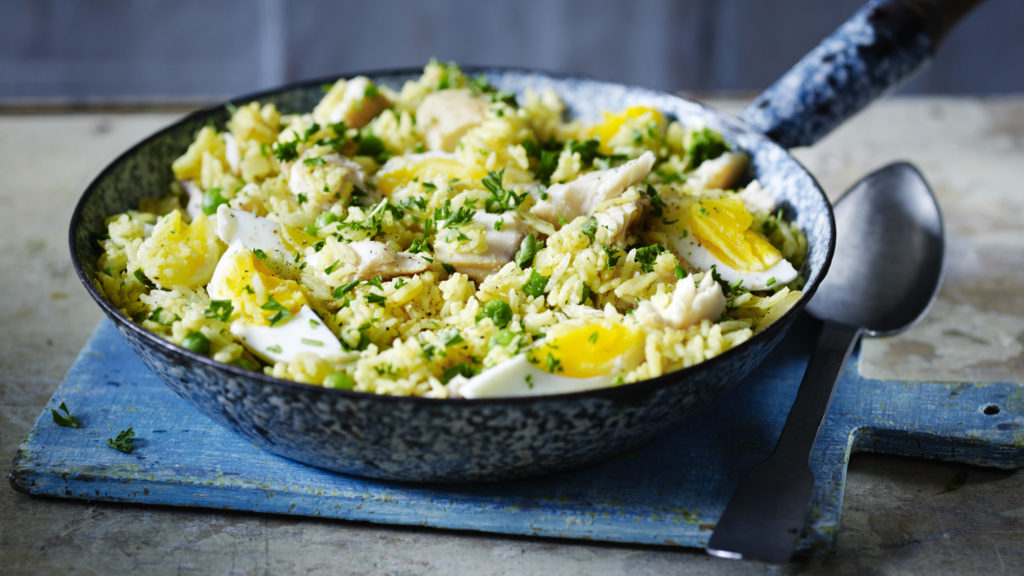

It is an unusual dish for breakfast as it consists of curried rice, smoked fish, boiled eggs, parsley, and lemon juice. Not the usual British breakfast. Though, it is the origins of the dish which gives meaning to it as it is steeped in British and Indian history.
BONUS:
to see more of English foods, check my YouTube post
